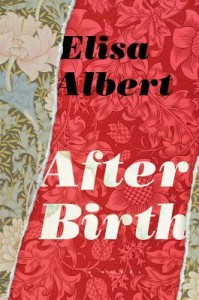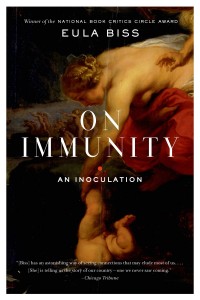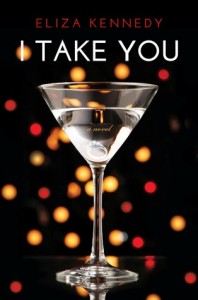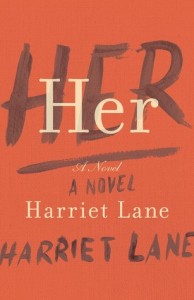December 11, 2016
2016 Books of the Year
As always, I’ve failed in both my efforts to read everything I wanted to read in 2016 and also to keep my top ten to a number below twenty. Still, I think I’ve failed quite successfully here, and I’m really happy with how the year has read up. Thanks to the authors and readers who inspire me and make my reading life so much.
*
 Rich and Pretty, by Rumaan Alam
Rich and Pretty, by Rumaan Alam
“I loved its humour, its prose, its quietness and detail. I loved its subtle subversions—second abortions and pregnant women with a drink. I loved the difference between the two characters’ voices, how richly the two were delineated, and that the title is tongue-in-cheek—in a Mad Men fashion, Alam’s novel takes the idea of “types” of women and a binary approach to womanhood and complicates the idea entirely to show that women can be whole, flawed, inexplicable and fully realized people whose lives and experiences are worth writing about, thinking about. Which really shouldn’t be such a revelation, and this is still a completely excellent book for those of us who already know.”
*
“Bennett nicely situates the personal against the political, Nadia’s experience with anti-abortion politicking by church members (although not so avidly—these are reasonable people) and also about how one’s convictions become flexible when an unwanted pregnancy is a fact instead of an idea. She shows how a woman can choose an abortion and know it’s the right choice, but still mourn what she’s lost and wonder at the could-have-beens. That an abortion, like a lot of things that happen to people over the course of their lives, is a complicated, multi-faceted thing.”
*
“I kept laughing out loud, which is a mark of literary achievement. Though I also cringed—as one who has never mastered air-kisses, I recoiled at Coleman’s recounting of her first bisous and how she actually made cheek contact. She writes about being asked to play her violin in a hair salon, but how her own unruly do caused a great upset when she arrived. Or the man she met who wanted to perform songs he’d written, which turned out to be “sex songs” with lyrics like, “The horny bull wants a bouncy ride.” And she meets a lot of men, Coleman, and in the beginning, being lonely, takes them up on their invitations, until she realizes that she’s setting herself up for a lot of awkward interactions. She longs for the company of women friends as well, but these kind of relationships are harder to find. Not to mention that at the beginning of her time in Paris, Coleman hardly speaks French.”
*
“It’s a novel about the 1960s, about idealism and reality, about the narrow confines of a wife’s identity and that of a mother. Familiar themes, all of these if you’ve read books like Margaret Laurence’s The Fire Dwellersor watched Mad Men, but themes made fresh with the nuances of the novel’s point of view, the carefulness with which these ideas are examined. In Becoming Lin, the prose is mostly inconspicuous, but what grips the reader is the evolution of Lin’s consciousness, and the complexity that arises from the absence of polarities—unusual for a history of a decade so constructed of extremes.”
*
 Experimental Film, by Gemma Files
Experimental Film, by Gemma Files
“I spent Thanksgiving weekend—as summer turned into fall, the leaves turned into reds and oranges, as everything started to wither and die—reading Gemma Files’ Experimental Film, which was so fitting for the season. I absolutely loved it, and was not the only one to do so—the novel won the Shirley Jackson Award in the summer and the Sunburst Award for Excellence in Canadian Literature of the Fantastic in September. It’s a book about horror movies, and the history of Canadian cinema, and motherhood, and parenting a child with autism, and there are ghosts and it gets creepy, and it gave me bad dreams—which I mean as a testament to the book’s power.”
*
 The Trespasser, by Tana French
The Trespasser, by Tana French
I’d preordered The Trespasser, French’s first book since 2014, and it seems fitting that my year of Tana French should have a new release by her within it. (I was in Barbados when I learned this new book was forthcoming. Imagine my joy: that there would be another Tana French when the books in the Waitrose bag were done!). And it was everything I’d hoped it would be—a return to tradition of the first four books, a narrator on the edge who doesn’t know how close she is, a strange and tricky murder whose solution is not immediately in sight. I love her plots, her characters, her humour, and that I learn insults like “wankstain” (which shows up in two books). I love her complicated women and men, and their aloneness, and the awkward ways her characters connect with each other. I love her prose, her twists, and her portrayal of Ireland post-boom. Can you tell that I love everything?
*
 Little Labours, by Rivka Galchen
Little Labours, by Rivka Galchen
“These fragments are preoccupied with the poster for a Keanu Reeves flop; the tiresome anecdotes we tell our friends about our babies presuming they’ll be interested (and once those friends have babies, they even actually are); a mention of the woman who drowned her five children; a horrible woman whom Galchen regularly encounters in her building’s elevator who has strong feelings she must articulate about her baby’s size; on head shapes, their remarkability and otherwise; about troubling proclivities toward orange; one piece beginning, “Literature has more dogs than babies, and also more abortions.”; about Frankenstein, Godzilla, Rumpelstiltskin, Lucille Ball, and The Tale of Genji (but not all in the same essay); about screen time, and what writers had children and who didn’t, and why writers’ children keep writing about closed office doors (and Galchen wonders why these doors are more troubling than the doors at Daddy’s work, downtown in a high rise building); about babies in art; and her complicated feelings about women’s writing and “women’s writing,” which she fascinatingly teases out.”
*
 The Dancehall Years, by Joan Haggerty
The Dancehall Years, by Joan Haggerty
“Joan Haggerty is an extraordinary writer, her prose Woolfian in its stream of consciousness, its immediacy. This is a saga sweeping four decades written in the present tense. And it’s true that when we talk about summer books, we sometimes mean that they’re a bit light in substance, but this is a different kind of summer book. It’s not difficult, and it’s got its own kind of lightness (strung together by summers as it is), but it’s not a “beach read.” Which isn’t to say it would be wonderful to read it at a beach, but still, it’s not the kind of novel that would blow away in the breeze.”
*
 The Little Communist That Never Smiled, by Lola Lafon
The Little Communist That Never Smiled, by Lola Lafon
“On the surface, Lola Lafon’s novel The Little Communist Who Never Smiled (translated from French by Nick Caistor) is a fictionalization of the life of Nadia Comaneci, but that (of course) is just a cover. What the book is really about is messaged in between the lines (or, quite literally, between the words). The Little Communist… is a book about the Cold War, the politicization of sport and womanhood, about deciphering codes and, fundamentally, this is a novel about punctuation.”
*
 The Party Wall, by Catherine Leroux
The Party Wall, by Catherine Leroux
“It’s always a good sign when the blank pages inside a book become riddled with notes and diagrams, as has been the case with my copy of the Governor-General’s Award/ Giller-nominated The Party Wall, by Catherine Laroux, prize-winner in its original French, translated into English by Lazer Lederhendler (Nikolski!). Not because the stories themselves in the novel are so difficult to figure out—in fact, they read beautifully with luminous prose (“Fall is approaching and the warmth of the South throbs on the horizon like a sack of gold at the foot of a rainbow”)—but because the challenge and the pleasure is discovering how all of it fits together. While the shape of most narratives is a horizontal line (with the inevitable bump for a climax), the shape of The Party Wall is multi-dimensional, arrows pointed in all four directions and connections that hold the whole thing fast.”
*
“Surprisingly, Birdie is not a heavy book, even with all the violence and tragedy. It’s as funny as it is sad, and more than that, it’s vibrant—powered by the voice of a woman who seemingly lies unconscious, which is kind of ironic, but there’s a lot going on inside Birdie’s mind, even as she’s got one half-opened eye on The Frugal Gourmet. As a character she’s rich and realized, and Lindberg never makes her a victim of her circumstances, her agency retained even in her lowest moments. Her very act of retreating into her mind, while passive from the outside, is a powerful gesture, and necessary for healing, for the possibility of a future.”
*
 Double Teenage, by Joni Murphy
Double Teenage, by Joni Murphy
“It’s heavy, but it’s not. I read this book all day on Sunday, a few hours in the afternoon in my hammock. I devoured it, and loved the shape of the project—that this is a novel gesturing outwards, pointing to the world, using the world and its threads to build something new, offering structure, frameworks, where we hadn’t seen such a thing before. Daring to state that girlhood is significant, even if it’s a stage, and even if it’s a stage. I loved the poetry of Murphy’s prose, the power of her language. The power of the book full stop—it’s both the story of my life and also unlike anything I’ve ever read before.”
*
 Frankie Styne and the Silver Man, by Kathy Page
Frankie Styne and the Silver Man, by Kathy Page
“Frankie Styne is a new edition of Page’s novel, first published in 1993, and it put me in mind of my favourite Hilary Mantel novels, her first two, Every Day is Mothers Day and Vacant Possession, dark comedies about the dark edges of humanity and their successful attempts to outmaneuver meddling social workers. Page’s social worker is Annie Purvis, who we know first from the point of view of her client, Liz Meredith, who’s just been moved into a terrace house with her baby. Liz has spent her time most recently living on a railcar after becoming estranged from her family, but since her baby’s birth (compounded by the fact that he has developmental abnormalities) she’s become tangled up in “the system”. Although she diverts all attempts to get her installed with a phone (living as she does by her grandmother’s advice to “Always avoid ties that bind”), she could do with a television, but in the meantime, she contents herself by listening to conversations between the troubled couple next door and imagining a different kind of reality existing on a planet far away, that life itself is merely the plot of a cheap pulp novel she’s somehow been stuck in.”
*
 I’m Thinking of Ending Things, by Iain Reid
I’m Thinking of Ending Things, by Iain Reid
“Clear the decks if you’re thinking about picking up this book, because you’re not going to be able to put it back down again. Don’t start reading it at night though or it’s going to be hard to fall asleep. I was intrigued by this psychological thriller, the debut novel by Iain Reid who’s previously been known for two award-winning heartwarming memoirs. Could he really pull off such a literary change of pace? But he does, and it’s breathtakingly good. Best of all, no one is going to compare this book to Gone Girl or The Girl on the Train, but it’s something altogether different. It also manages to be completely creepy but actually free of gore and violence, which is an incredible literary feat. And finally, that a book can be so enthralling and disorienting at once is just incredible.”
*
 Today Will Be Different, by Maria Semple
Today Will Be Different, by Maria Semple
“There are writers who sit down and painstakingly plan their books before they start writing, a mess of post-it notes and index cards, and one gets the feeling that Maria Semple is not one of them. The plots of her books resemble those dotted lines on maps in Saturday morning cartoons in which small children navigate space with curious and often dangerous diversions. Which is kind of a funny way to plot a book, but think of the joy you once got in running your finger along that line, and also of the momentum inherent in this kind of narrative, the briskness with which the reader is brought along for the ride. It also turns out that plot isn’t really the point is, but voice is, and Eleanor Flood’s is the kind of voice that’s hard to get out of your head.”
*
“For me, Smith has always been a masterful novelist whose works just kind of peter out before the end, and my explanation for that is that her stories are so excellent that the endings are always going to be a let-down and/or do we really expect her to come up with a novel like that and properly end it too? But in her fourth book, it seems she’s finally got the conclusion that comes with a gut punch, the last fifty pages or so finally bringing the pieces together, the patterns emerging. The conclusion of Swing Time is wonderful, devastating, and ambiguous in the most engaging fashion. Yes, the book is a bit bloated in the middle, but reading any of Smith’s prose is a pleasure. And all of it matters—you just don’t know how until the end.”
*
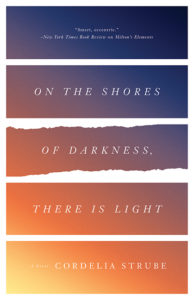 On the Shores of Darkness, There is Light, by Cordelia Strube
On the Shores of Darkness, There is Light, by Cordelia Strube
“At nearly 400 pages, the novel is long, but swiftly paced and never dull. The bleakness of its considerations are broken up with incredible humour, from the cacophony of the voices in its background to the sheer audacity of Harriet herself, her nerve, all the things she is willing to do and say. There is a humour too in the contrast between the child’s point of view and the world around her, and—in the case of Harriet’s friend, Darcy, in particular—the person she is trying to to be. The sheer naïveté of these would-be old souls. Darcy likes to go on about, “that Caitlin whore,” a friend from her old neighbourhood, and we learn about what Caitlin did to her at Guides: “I was a Sprite and she was a Pixie. That ho bag made like all the cool girls were Pixies….Then the skank fucked up my puppetry badge.””
*
 The Break, by Katherena Vermette
The Break, by Katherena Vermette
“The family tree at the beginning of the book is useful, but the reader soon becomes acquainted with the women of this family, so it won’t be referred to throughout. Momentum is strictly forward as the pieces begin to come together, Vermette deftly moving in and out of time to create a three-dimensional feel to the narrative—we come to feel we know this story from all sides. Four generations of a family, and how tragedy trickles down with all the goodness, the former not negating the latter though. As Vermette has made clear, this is a novel about women and about survival, a story that complements but also takes issue with stories and statistics about First Nations and Metis women as victims before they’re even people proper. But her characters are people here, people with flaws and foibles, strengths and weaknesses, and it’s the strength that endures: “‘It’s okay, my girl. It’s okay.’ Her answer to everything.”’
*
 We Oughta Know, by Andrea Warner
We Oughta Know, by Andrea Warner
In her book, We Oughta Know: How Four Women Ruled the ’90s and Changed Canadian Music, Andrea Warner articulates that whole scene, and the remarkable fact that four Canadian women were leading the charge of women in song: Celine Dion, Sarah McLachlan, Shania Twain, and Alanis Morissette. These four women too are (along with Diana Krall) are the only Canadians on Canada’s best-selling artists lists, coming in above the Beatles. And even more remarkably, they all made their mark during a five year period in the mid-1990s. What was going on exactly, Warner wonders? How did they do it?
*
From Shrill: ““Everything happened in those five years after my abortion. I became myself. Not by chance, or because an abortion is some kind of mysterious, empowering feminist bloode-magick rite of passage (as many, many—too many for a movement ostensibly comprising grown-ups—anti-choices have accused me of being), but simply because it was time. A whole bunch of changes—set into motion years, even decades, back—all came together at once, like the tumblers in a lock clicking into place: my body, my work, my voice, my confidence, my power, my determination to demand a life as potent, vibrant, public, and complex as any man’s. My abortion wasn’t intrinsically significant, but it was my first big grown-up decision—the first time I asserted unequivocally, “I know the life that I want and this isn’t it”; the moment I stopped being a passenger in my own body and grabbed the rudder.”
*
 The Best Kind of People, by Zoe Whittall
The Best Kind of People, by Zoe Whittall
While the entire book is fantastic, Whittall gets full points for her spectacular ending, however, which turns the story inside out and disturbingly rips us away from the singular perspectives of characters to reflect the wider culture of rape and sexual violence against whose context the entire novel has been taking place. Which is to say that this is not just a story about a family. And then the final sentence, which will haunt you long after you’ve finally finished reading, quiet, subtle, devastating and terrible, just like the injustice that is Justice, which isn’t anything like justice at all.
*
 Notes From a Feminist Killjoy, by Erin Wunker
Notes From a Feminist Killjoy, by Erin Wunker
Notes is a way of starting. Trying. Essai. If a manifesto is a red rag, then a note is a building block, a puzzle piece. The reader responds not by charging, but by saying, Yes and, or Yes but. She doesn’t respond by tearing the whole thing down.
I love the way the narrative thread of Wunker’s book makes its way with seeming effortlessness. There is nothing laboured about how a discussion of rape culture leads to the Jian Ghomeshi trial leads to women coming together leads to a chapter on friendship. (Which references The Babysitters Club. Yes, and!!) Why are so few of our formative texts about female friendship? “What is it about female friendship that inspires such insipid descriptors?” What are relationships between women often so fraught?
“Is it too hard to write your own narrative and witness another’s, simultaneously?”
*
“I loved Alice Zorn’s Five Roses, a novel that’s a love letter to Montreal, its neighbourhoods, and to the magic and serendipity of city life that is inevitably born from the fact of so many characters living in close proximity. It’s a bit of a mess, it is, city life, what with different cultures, and types of people, and old traditions and new traditions, and money and poverty, home and commercial enterprise, and history and the moment, which is now, and impossible to capture anyway…because the only thing that ever stands still in the city is the force of change. Zorn’s novel, however, manages to convey all this and not be a mess, disparate narratives woven together in a way that sparks magic but is left just untidy enough to still ring true.”
December 3, 2015
The Pickle Me This 2015 Best Books of the Year
It’s a bit arbitrary, our system for determining Pickle Me This’s 2015 Best Books of the Year. To begin, with “our” of which I speak is me, so it’s not as though choices have to be run through a committee. It’s mainly like this: if I liked a book well enough to read it and review it on my blog, that’s saying something about the book’s value. If the title seems like a stand-out to me, I add it to my Picks List, and then at the end of the year, I go through those picks to find which titles are still resonating with me after the book as been read. And this year, these are the books I came up with. PS I also really liked The Girl on the Train, but I think you’ve already heard about that one. So I am pleased to recommended any of the following instead.
**
“No, listen, though, the problem is with books, with novels about motherhood. Or even worse, those novels that purport to finally pull back the veil and “tell the truth about motherhood.” The problem, in addition to the fact that nobody cares about babies, is that a book about motherhood is rarely read (if it is read at all) as a book about a mother. Instead, it’s a manifesto. Read as a statement on an institution instead of a literary work about a fictional character. A story. We have a hard time grasping that there can be more than one story about motherhood, or if there is more than one, there’s just two then, always diametrically opposed. Two gals facing down on the cover of a magazine. One is always carrying a briefcase. When in reality, there are so many stories, and each of those stories comprise so many stories in themselves, the same way that a single day can hold more than one kind of weather.”
Read my review of After Birth, from March.
**
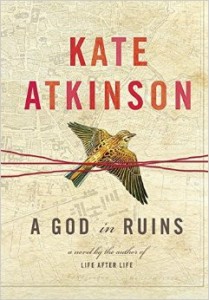 A God in Ruins, by Kate Atkinson
A God in Ruins, by Kate Atkinson
“Atkinson’s new novel, A God in Ruins, is not a sequel to Life After Life, she explains in her afterword, but “a companion novel.” It’s the life story of Ursula’s brother Teddy in a version of their family’s life that is slightly different than those portrayed in the first novel. Where Ursula died over and over again, Teddy shows a predilection toward survival, miraculously making it through a career as a WW2 bomber pilot. And it is the war upon which his story hinges—an experience both makes him and destroys him. An experiences that does not become less raw as the war itself fades into history, though those around put it away in the past. “You can only go forward,” is a line delivered again and again in the text, a winky joke at the premise of Life After Life, but also blatantly wrong in the matter of narrative because an author is free to put her story together anyway she likes—forward, backward, and round and round in circles. Posing the questions: what if history never entirely goes away? how does it change as we carry it with us? And how is a conventional existence not unlike Ursula’s in reality: “It felt as if he had lived many lifetimes,” Teddy remembers at one point, and who has not felt this way? What is the cumulation of these lives, these selves? What is the thing that connects them?”
Read my review of Life After Life, from May
**
“…While I have absolute trust in my doctor and her advice, and in the importance of vaccines for public health, I was one of the many people who put down that fear-mongering story in The Toronto Star last month on the HPV vaccine and said, “My kids are never going to get that.” And then the whole furor blew up, and I saw how we’d been played.
Which is the point at which I decided to read On Immunity by Eula Biss. Biss, poet and award-winning essayist, wades into the vaccine issue, not to seek a middle-ground—because she acknowledges that there isn’t one; the science is conclusive; her own child is vaccinated—but to seek context, to create something richer than a polemic. More than a book on “issues”, even, this is a book on language and metaphor, about how both frame the way we understand our bodies and our world, and about vaccinations and immunity might serve as a metaphor for America and the world today. “And it has vampires in it,” so notes the blurb on the back by Rebecca Solnit. Because, yes, this book is blurbed by Rebecca Solnit AND Anne Fadiman, which makes it basically a non-fiction holy book. And it is oh so very good.”
Read my review of On Immunity, from March.
**
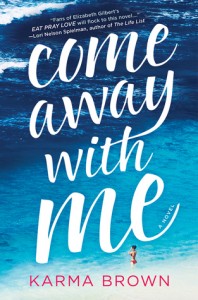 Come Away With Me, by Karma Brown
Come Away With Me, by Karma Brown
“I am intrigued by questions of how people survive the seemingly unsurvivable, which was the reason I picked up Come Away With Me, Canadian writer Karma Brown’s debut novel. It’s the story of Tegan Lawson who had everything she’d ever wanted—an amazing husband and a baby on the way—when the dream is shattered by a horrific accident. Five months after the tragedy, her husband implores her to pick up the pieces of their life (and perhaps begin to forgive him for the accident, as he was driving the night it happened) by embarking on the trip of a lifetime to Thailand, Italy and Hawaii. Reluctantly, she goes, though she is not sure she’s ready (and neither are their families). And the trip itself does not prove to be the salve it might have been in a lesser novel, all of their troubles simply melting away—Tegan’s not taking her anti-depressants, she’s regularly still overcome with despair, her anger toward her husband seems impossible to let go of. And here we begin to see that this dream getaway is not the end of Tegan’s story but it’s the beginning of new one that’s vastly different than the life she’d planned on and dreamed of.”
Read my review of Come Away With Me, from September
**
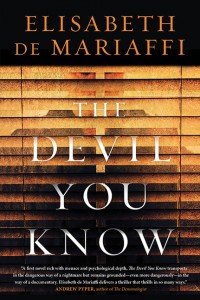 The Devil You Know, by Elisabeth de Mariaffi
The Devil You Know, by Elisabeth de Mariaffi
“The stakes were high for Elisabeth de Mariaffi’s The Devil You Know. On Wednesday morning, I walked 2km at -25 degrees to get a copy, because I’d been hearing such good things about it and it seemed like exactly the kind of book you want to hang out with curled up warm while the blizzard howls. A mystery, a thriller, a book set in Southern Ontario during the 1980s and early ’90s, during which a series of young girls were kidnapped and sometimes found murdered, otherwise their faces depicted on posters for years afterwards under the heading, “Missing.” Years later, “aged-enhanced” images of these children would be updated, but we’d still recognize them. I’ve noticed that reviewers have been responding to the book personally, viscerally. There’s a whole generation of us haunted by these missing girls—I could plot my own history by theirs, from Nicole Morin to Alicia Ross. (I was too young to know about the disappearance and murder of Sharin’ Morningstar Keenan in 1983, though she was taken the very playground where my children play.)”
Read my review of The Devil You Know, from January.
**
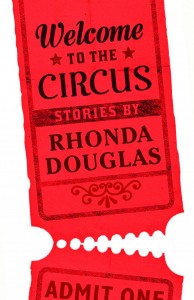 Welcome to the Circus, by Rhonda Douglas
Welcome to the Circus, by Rhonda Douglas
“Rhonda Douglas doesn’t miss a beat in her fiction debut, the short story collection, Welcome to the Circus. It’s a collection to be admired right down to its basic components—the sentences. “…our three hearts open and close like the mouths of tiny birds,” in “Nous and René Lévesque.” Later in the same story, “The future seems to yawn open, becomes something far less certain, all of plans swinging on their hinges.” In “Humanitarian Relief,” “Henry Jeans amasses flesh about his bones with the single-minded focus of a NASCAR driver eating up track.” Ten stories, each one based around a tantalizing premise: a fresh take on Two Solitudes and adolescence, inspired by a high school core-French teacher in rural Newfoundland; a story of three veteran humanitarian aid workers in a Kenyan refugee camp; a series of letters to one’s eighth grade self; a collection of documents based on the case of executed dancer and spy, Mata Hari, curated by a man whose father may have been among her paramours; “Still Life With Book” about a teenage boy who partakes to carve the works of John Donne into his flesh, inspiring his therapist to reinvigorate his sex life. In “Sounds of our Paleolithic Past,” a curator at the Royal Tyrrell Museum in Alberta mixes business with pleasure as she develops a complex relationship with a Neandertal discovered in the badlands; in the next story, a daughter considers her legacy working in the family porn business as she faces threats of violence and estrangement from her sister; in “Welcome to the Circus, Sooky Baby,” a grieving teenage girl finds solace in surprising places—including the company of an elephant; and finally, “Cancer Oratorio,” structured as a series of choral/orchestral movements from the collective perspective of a choir facing the loss of a member from cancer.”
Read my review of Welcome to the Circus, from April.
**
 A Really Good Brown Girl, by Marilyn Dumont
A Really Good Brown Girl, by Marilyn Dumont
“I hadn’t budgeted for books at The Stop Farmers’ Market at Artscape Wychwood Barns a few weeks back, but it turned out that Pedlar Press and Brick Books were vendors (and I met Kate Cayley, whose How You Were Born I loved so much!) so I couldn’t help but pick up something. And I am so glad that the something I got turned out to be the deluxe redesign of Marilyn Dumont’s Gerald Lampert-winning debut collection, A Really Good Brown Girl. A book I read in days, which is rare for me and poetry, but I was captivated by the narrative, the language, the brute force of these poems, as well as their sense of humour, their cheek. “Squaw Poems,” about growing up Metis on the prairies, a household surrounded by “The White Judges” who waited to pounce. And never really went away. But then—
“I am in a university classroom, an English professor corrects my spoken/ English in front of the class. I say, “really good.” He say, “You mean/ really well, don’t you?” I glare at him and say emphatically, “No I/ mean really good.”
Read my review of A Really Good Brown Girl, from August
**
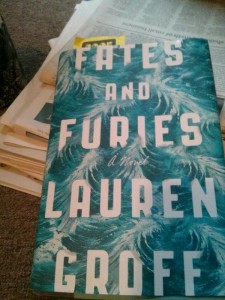 Fates and Furies, by Lauren Groff
Fates and Furies, by Lauren Groff
“I still vividly remember reading Groff’s debut, The Monsters of Templeton, for the very first time, and being bowled over by the book’s audacity, by the author’s talent. And with each subsequent book—the story collection, Delicate Edible Birds, and the acclaimed novel, Arcadia—Groff has surpassed all expectations. She’s a writer of huge ambition and even larger canvases, unabashedly literary, unabashedly story, traditional in her approach to crafting fiction, except that she seems to be reinventing the novel every time, pressing at its limits. I’ve spent the last week reading Fates and Furies and being particularly annoyed that anybody imagines Jonathan Franzen to be “a greatest living novelist” (?) when: Lauren Groff. Lauren Groff. Lauren Groff.
(If she were a man and a giant asshole, however, she’d definitely be discussed in those terms.)”
Read my review of Fates and Furies, from September.
**
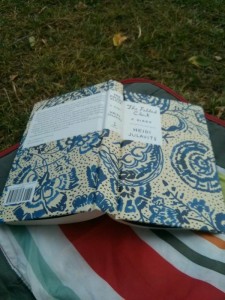 The Folded Clock, by Heidi Julavits
The Folded Clock, by Heidi Julavits
“The Folded Clock is a book about the puzzles and mysteries of an ordinary comfortable life. For me, one of those mysteries is the way that a book—an object wholly apart from my existence, until I bought it—can appear to be reading my mind, stealing my life. (I have this experience also when I am reading Rebecca Solnit.) Like Julavits’ whole chapter about Wasted: The Preppie Murder, by Linda Wolfe, and being three fucks away from Robert Chambers—not that I have ever been such a thing, but I have a thing about that book. Or about abortions as women’s work, about how the boyfriends are always informed but they’re never there—abortions are something that happen between friends. About the internet and desire, about conscious attempts to resist the google-ization of everything—which is interesting because there is at first glance something so bloggish about Julavits’ approach, and yet the construction of her entries is so counter to blogging’s immediacy. The Folded Clock is a bit of a throwback, a project decidedly analogue.”
Read my review of The Folded Clock, from July.
**
“Within the first few pages it is clear that Lily drinks too much, swears religiously, and has no compunction about casual sex as long as the sex is excellent, and it was all so refreshing. That she was a bit silly, but not stupid. That she was empowered, interesting, and nobody’s victim. Which is not to say that she hasn’t herself in quite a pickle as the novel begins: Lily is engaged to Mr. Wonderful—it’s been a whirlwind—and she’s pretty sure she even loves him, but she still can’t kick her habit of picking up men in bars and in elevators, and, well, everywhere. Lily wants to marry Will, because he’s a smart choice and Lily is wise enough to be in the habit of making these. But she doesn’t seem ready to become domesticated—and now the wedding is just days away.
The thing about Lily Wilder is that she’s happy. In fact, she insists upon her happiness, her value, which is rare with comic heroines. She is not a problem to be solved, and she doesn’t want to be fixed. She just wants to have it both ways—but how?”
Read my review of I Take You, from July.
**
“Which makes Her so compelling, so beyond those other narratives which tire me whose only virtue is their honesty, is that the truths revealed about new motherhood are just the starting point. From here, Lane has created a psychological thriller so convincing in its reality, so ominous in its mundanity, so sippy-cup sinister in a manner I last recall reading in Emily Perkins’ excellent 2008 book, A Novel About My Wife.
Nina gets closer and closer to Emma, welcomed into her home, caring for her children, and while we know along she has nefarious intentions—presented in the alternating chapters which, like Emma’s, are written in first-person—we don’t know why she’s out to exact revenge from Emma, who doesn’t remember her at all. We don’t know either which form her revenge will take, though as the novel progresses, indicators emerge, signs and signals that are so terrifying, all hurtling towards the novel’s very end, which is completely and utterly devastating. Not to mention amazing. But don’t say I didn’t warn you.”
Read my review of Her, from January
**
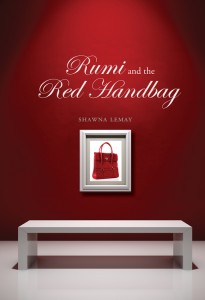 Rumi and the Red Handbag, by Shawn Lemay
Rumi and the Red Handbag, by Shawn Lemay
“Rumi and the Red Handbag is a slim, heartbreaking and perfect read, rich with gorgeous prose, and depth and texture. Infused with allusions, explicit and otherwise, it’s a hushed and quiet celebration of women and their lives and their words and the secrets they carry. There is the Woolf, of course, and references to Clarice Lispector, who I’ve never read, but now I have to, and Charlotte Bronte, Jane Austen, Sylvia Plath. Plus vintage Harlequins—this is a book that permits great reverence to women’s stories and women’s spaces.”
Read my review of Rumi and the Red Handbag, from November
**
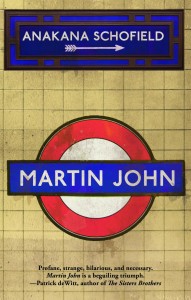 Martin John, by Anakana Schofield
Martin John, by Anakana Schofield
“Anakana Schofield’s Martin John, a novel about a sexual deviant and the follow-up to her award-winning Malarky, is primarily a book about language. It’s about sexual violence is able to happen because of words and ideas that are never articulated or defined, and how these ellipses in our understanding go on to create further damage and harm. “It was a time when people didn’t ask as many questions. That’s the time it was.”
And so in order to fill in the blank, to ask the questions, to define the it, Schofield has to reinvent the shape of a novel. Eschewing chronology, point-of-view, objectivity, artifice itself for something that more resembles a case study, a long-form incident report. Just the latest for Martin John, the reader supposes, who has been in and out of the care of psychologists, social workers and other medical professionals for much of his life. Though he makes a point to stay out of their way—meddlers—and to keep to his routines, essential. He’s holding down a job as a security guard, lives in a nondescript shabby house in London (albeit one cluttered with the detritus of his media habits), visits his Aunt Noanie on Wednesdays, under specific instruction of his mother back in Ireland. (D’ya hear me, Martin John?) But it’s clear that, no matter his circuits and refrains, this centre (a precarious arrangement orchestrated by the mother) simply cannot hold.”
December 14, 2014
2014 Books In My Head List
I feel strange about this list. First, because my reading seemed less monumental this year—I missed the blockbusters like The Goldfinch, or The Interestings. Second, my local bookshop closed, which is from where so much of my zest for reading came—I am sure I missed many books that in previous years, Book City staff would have kept neatly stacked on their new books table. And third, there are so many 2014 books I haven’t read yet. The scramble to get them all read was making me crazy, so I gave up, and now they’ll have to wait for the new year.
Luckily, books keep. Case in point: there are books here on the 2014 list that weren’t published in 2014 at all.
While this is kind of my Top Books of 2014 list, I’m thinking of it more as The Books In My Head list. The books whose reading experiences I remember so vividly, the books I kept talking about, whose characters, stories and ideas have lived on in my mind long after the last page was finally read.
In a particular order, which is alphabetical.
 Fitting though, that Caroline Adderson’s Ellen in Pieces is topper most. It may well have been. This is the book that was oddly overlooked by awards juries, and yet readers have embraced it, Ellen love-ins taking place on Twitter and Facebook quite regularly, I am finding. I have recommended it widely, and only received glowing reports back. It’s a funny, brutal, rich and challenging book. I’ve never read such an unflinching story of cancer (and love, and aging, and motherhood, and mortality). As I wrote in August, “It’s a brave take on things, really, but typical, because the exquisite nature of the entire book comes from Adderson defying her readers’ expectations, surprising you with every line, with every turn of the page.” I do think that Ellen in Pieces is THE book of the year, and you’re missing out if you haven’t read it yet.
Fitting though, that Caroline Adderson’s Ellen in Pieces is topper most. It may well have been. This is the book that was oddly overlooked by awards juries, and yet readers have embraced it, Ellen love-ins taking place on Twitter and Facebook quite regularly, I am finding. I have recommended it widely, and only received glowing reports back. It’s a funny, brutal, rich and challenging book. I’ve never read such an unflinching story of cancer (and love, and aging, and motherhood, and mortality). As I wrote in August, “It’s a brave take on things, really, but typical, because the exquisite nature of the entire book comes from Adderson defying her readers’ expectations, surprising you with every line, with every turn of the page.” I do think that Ellen in Pieces is THE book of the year, and you’re missing out if you haven’t read it yet.
Purchase Ellen in Pieces from McNally Robinson
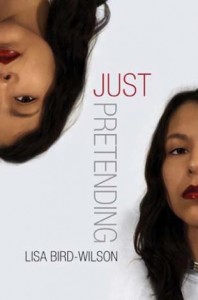 I read Lisa Bird-Wilson’s Just Pretending in May, starting it while we were visiting Winnipeg, and just after reading Pat Barker’s Union Street, a collection that situates the lives of working-class English women similarly to how Bird-Wilson presents First Nations women in Canada. At the time, we were promoting The M Word and it was Mother’s Day, so Bird-Wilson’s themes of motherhood resonated with me, and complicated my own understanding of these themes in my comfy middle-class context. The stories in Just Pretending portray “the wholeness of marginalized women’s experiences, experiences which hinge on maternity, on motherhood and daughterhood, and on what happens when these connections are broken,” and they’re so important now with untold stories of Canada’s Indigenous women’s experiences finally being brought to (some) light.
I read Lisa Bird-Wilson’s Just Pretending in May, starting it while we were visiting Winnipeg, and just after reading Pat Barker’s Union Street, a collection that situates the lives of working-class English women similarly to how Bird-Wilson presents First Nations women in Canada. At the time, we were promoting The M Word and it was Mother’s Day, so Bird-Wilson’s themes of motherhood resonated with me, and complicated my own understanding of these themes in my comfy middle-class context. The stories in Just Pretending portray “the wholeness of marginalized women’s experiences, experiences which hinge on maternity, on motherhood and daughterhood, and on what happens when these connections are broken,” and they’re so important now with untold stories of Canada’s Indigenous women’s experiences finally being brought to (some) light.
Purchase Just Pretending from McNally Robinson
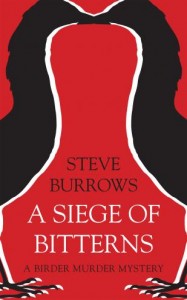 It was on Mother’s Day weekend that we visited Blue Heron Books in Uxbridge, the same day that Steve Burrows was appearing there to promote his book, A Siege of Bitterns. I was happy to buy a copy, as I’d been intrigued with his novel about a birdwatching detective, and I was so pleased to absolutely adore it. Unsurprisingly—the book has received rave reviews. The crux to the mystery’s solution involved not just birdwatching, but grammar. This book is a geek’s paradise. I’ve also been pleased to have happy readers reporting back after following my recommendation for this one. And good news: Burrows next title in the Birder Murder Mystery series is A Pitying of Doves, out this spring. I am so excited.
It was on Mother’s Day weekend that we visited Blue Heron Books in Uxbridge, the same day that Steve Burrows was appearing there to promote his book, A Siege of Bitterns. I was happy to buy a copy, as I’d been intrigued with his novel about a birdwatching detective, and I was so pleased to absolutely adore it. Unsurprisingly—the book has received rave reviews. The crux to the mystery’s solution involved not just birdwatching, but grammar. This book is a geek’s paradise. I’ve also been pleased to have happy readers reporting back after following my recommendation for this one. And good news: Burrows next title in the Birder Murder Mystery series is A Pitying of Doves, out this spring. I am so excited.
Purchase A Siege of Bitterns from McNally Robinson
 I’m so grateful to the good people at All Lit Up, without whom I might never have discovered Megan Gail Coles and her story collection Eating Habits of the Chronically Lonesome. Which contains this paragraph: “The reason Garry did these things was ’cause he couldn’t afford any better. Half of what he earned over at Pretty Paws was carted off to Newfoundland. Child support for an autistic kid he had with Slutty Marie down Gilbert Street, this the result of a one night stand./ Have you ever heard a sadder story, Dame? I mean, really? I barely poked her. We weren’t even lying down. It’s like her body sucked me sperm right inside her that night, vacuum cunt on her. Don’t ever have a go at the neighbourhood whore in an alley. Nothing good will come of it.” How could you not want to read this book?
I’m so grateful to the good people at All Lit Up, without whom I might never have discovered Megan Gail Coles and her story collection Eating Habits of the Chronically Lonesome. Which contains this paragraph: “The reason Garry did these things was ’cause he couldn’t afford any better. Half of what he earned over at Pretty Paws was carted off to Newfoundland. Child support for an autistic kid he had with Slutty Marie down Gilbert Street, this the result of a one night stand./ Have you ever heard a sadder story, Dame? I mean, really? I barely poked her. We weren’t even lying down. It’s like her body sucked me sperm right inside her that night, vacuum cunt on her. Don’t ever have a go at the neighbourhood whore in an alley. Nothing good will come of it.” How could you not want to read this book?
Purchase Eating Habits of the Chronically Lonesome from McNally Robinson
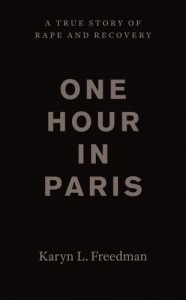 Unfortunately, as 2014 progressed, Karyn L. Freedman’s One Hour in Paris: A True Story of Rape and Recovery only became more and more important. I read it last spring as I pushed my baby in a swing. “The world, [Freedman] tells us with two decades of perspective in addition to her own violent rape, is a dangerous place for women, as statistics demonstrate in places as close as our own neighbourhoods and as far away as the war-wracked Congo. But nobody talks about these experiences, suggesting that such incidents are rare, suggesting to those lucky enough to not know better that sexual violence is a crime of circumstance, that it’s something most of us should be able to sidestep. It’s why newspaper columnists suggest that if a young woman refrains from drinking to excess, she might not get raped, and if she is raped, she should have known better. Thereby perpetuating victim’s sense of her own complicity in the crime against her, ensuring her silence, and so the cycle continues.” I’m so pleased that this book has been shortlisted for the BC National Non-Fiction Award.
Unfortunately, as 2014 progressed, Karyn L. Freedman’s One Hour in Paris: A True Story of Rape and Recovery only became more and more important. I read it last spring as I pushed my baby in a swing. “The world, [Freedman] tells us with two decades of perspective in addition to her own violent rape, is a dangerous place for women, as statistics demonstrate in places as close as our own neighbourhoods and as far away as the war-wracked Congo. But nobody talks about these experiences, suggesting that such incidents are rare, suggesting to those lucky enough to not know better that sexual violence is a crime of circumstance, that it’s something most of us should be able to sidestep. It’s why newspaper columnists suggest that if a young woman refrains from drinking to excess, she might not get raped, and if she is raped, she should have known better. Thereby perpetuating victim’s sense of her own complicity in the crime against her, ensuring her silence, and so the cycle continues.” I’m so pleased that this book has been shortlisted for the BC National Non-Fiction Award.
Purchase One Hour in Paris from McNally Robinson
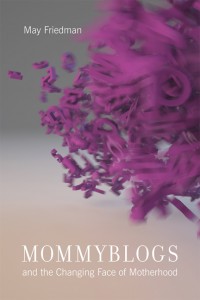 I read Mommyblogs and the Changing Face of Motherhood by May Friedman in September, and it was huge for me for all kinds of reasons. It laid the framework for the latest session of my blogging course, convinced me of the usefulness of academic theory for the very first time, and also that the history of women and blogging is one that is seriously under-documented and certainly worth telling. While Friedman’s research pertains to mommyblogs in particular (and her conclusions are always surprising, illuminating—if mommyblogs seem tired to you, she invites you to think again), it’s also hugely relevant to women and blogging in general, and is a fascinating and nuanced depiction of 21st century motherhood. And mostly, I am so struck by her notions of the usefulness of uncertainty (which reminded me of Rebecca Solnit, and ultimately led to cake): “In trying to form conclusions about mommybloggers—and about mothers—I am reminded of my children attempting to jump upon their own shadows: I am attempting to trap an essentially untrappable form of knowledge. After the initial discomfort and frustration that this inconclusive conclusion elicits, however, I have found that there is much to gained, as a researcher in general and as a motherhood researcher in particular, in looking instead at uncertainty as a valuable critical lens.” Feminism desperately needs this kind of approach, which is a fitting response to the complexity of actual people and the world.
I read Mommyblogs and the Changing Face of Motherhood by May Friedman in September, and it was huge for me for all kinds of reasons. It laid the framework for the latest session of my blogging course, convinced me of the usefulness of academic theory for the very first time, and also that the history of women and blogging is one that is seriously under-documented and certainly worth telling. While Friedman’s research pertains to mommyblogs in particular (and her conclusions are always surprising, illuminating—if mommyblogs seem tired to you, she invites you to think again), it’s also hugely relevant to women and blogging in general, and is a fascinating and nuanced depiction of 21st century motherhood. And mostly, I am so struck by her notions of the usefulness of uncertainty (which reminded me of Rebecca Solnit, and ultimately led to cake): “In trying to form conclusions about mommybloggers—and about mothers—I am reminded of my children attempting to jump upon their own shadows: I am attempting to trap an essentially untrappable form of knowledge. After the initial discomfort and frustration that this inconclusive conclusion elicits, however, I have found that there is much to gained, as a researcher in general and as a motherhood researcher in particular, in looking instead at uncertainty as a valuable critical lens.” Feminism desperately needs this kind of approach, which is a fitting response to the complexity of actual people and the world.
Purchase Mommyblogs and the Changing Face of Motherhood from McNally Robinson
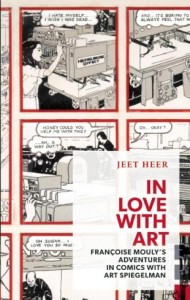 I remember reading In Love With Art by Jeet Heer on one of the first few days this spring when it was warm enough outside to walk and read without mittens, or it’s possible that it wasn’t actually that warm, but I was just enjoying the book so much. Francoise Mouly is a fascinating biographical subject, and I’d never heard of her, but unbeknownst to me, I’d seen her work—she was a long-time Art Editor of The New Yorker, and she’s the founder and Editorial Director of TOON Books, whose books we’re in love with at our house. And thisbook found its way into my (cold) hands just as Harriet was started to really get into comics, so I was pleased to learn so much about comics as an art form, and also the process behind comics creation, and what is entailed by the role of their editor. It was an excellent book, part of Coach House Books’ Exploded Views series of short books about big things, and I do love me a paperback that fits in my pocket.
I remember reading In Love With Art by Jeet Heer on one of the first few days this spring when it was warm enough outside to walk and read without mittens, or it’s possible that it wasn’t actually that warm, but I was just enjoying the book so much. Francoise Mouly is a fascinating biographical subject, and I’d never heard of her, but unbeknownst to me, I’d seen her work—she was a long-time Art Editor of The New Yorker, and she’s the founder and Editorial Director of TOON Books, whose books we’re in love with at our house. And thisbook found its way into my (cold) hands just as Harriet was started to really get into comics, so I was pleased to learn so much about comics as an art form, and also the process behind comics creation, and what is entailed by the role of their editor. It was an excellent book, part of Coach House Books’ Exploded Views series of short books about big things, and I do love me a paperback that fits in my pocket.
Purchase In Love With Art from McNally Robinson
 I only read The Bookshop That Floated Away last week, but I was so taken by Sarah Henshaw’s book, and I think that I’ll continue to be as much. We’re planning at trip to the UK in the spring, and top of my list of things to do there is tracking down the book barge. It’s the ideal book for anyone who ever thought that opening a book on a boat sounded like a perfectly sensible idea, and I loved its unabashed oddness, the absurd adventure, and all the references to books and reading, and also to Victoria Sponge Cake.
I only read The Bookshop That Floated Away last week, but I was so taken by Sarah Henshaw’s book, and I think that I’ll continue to be as much. We’re planning at trip to the UK in the spring, and top of my list of things to do there is tracking down the book barge. It’s the ideal book for anyone who ever thought that opening a book on a boat sounded like a perfectly sensible idea, and I loved its unabashed oddness, the absurd adventure, and all the references to books and reading, and also to Victoria Sponge Cake.
Purchase The Bookshop That Floated Away
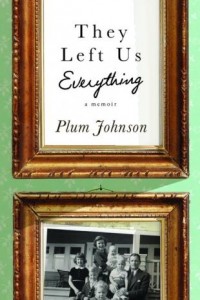 Plum Johnson’s They Left Us Everything was the most terrific memoir, ostensibly the story of a woman cleaning out her parents’ house after their deaths, but it’s also a record of a wonderful family history, about the curious shape and contents of archives and the stories they tell, about caring for aging parents, coming to terms with the past, the complexities of daughterhood and motherhood, and understanding our parents as people in their own right. I’m so pleased that it’s been nominated for the 2015 Charles Taylor Prize for Non-Fiction.
Plum Johnson’s They Left Us Everything was the most terrific memoir, ostensibly the story of a woman cleaning out her parents’ house after their deaths, but it’s also a record of a wonderful family history, about the curious shape and contents of archives and the stories they tell, about caring for aging parents, coming to terms with the past, the complexities of daughterhood and motherhood, and understanding our parents as people in their own right. I’m so pleased that it’s been nominated for the 2015 Charles Taylor Prize for Non-Fiction.
Purchase They Left Us Everything from McNally Robinson
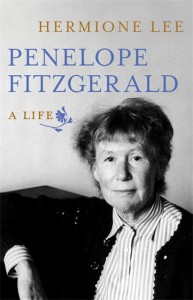 Hermione Lee’s biography, Penelope Fitzgerald: A Life, was the first book I finished in 2014, and it was how I spent my holidays—so so delightful. And anti-social. Biographers don’t come much better than Lee, and lives are rarely more interesting than Penelope Fitzgerald’s—though hers did pose a challenge for the biographer considering that all her early papers were lost when her houseboat sunk on the Thames during the 1960s (where she was living in abject poverty, barely supporting her three children. She went on to publisher her first book at age 60, won the Booker Prize at 7o). Fitzgerald’s novels had always seemed obscure to me, but their author’s life story has cast them in a new light (and I am excited for the new editions with covers by Julie Morstad).
Hermione Lee’s biography, Penelope Fitzgerald: A Life, was the first book I finished in 2014, and it was how I spent my holidays—so so delightful. And anti-social. Biographers don’t come much better than Lee, and lives are rarely more interesting than Penelope Fitzgerald’s—though hers did pose a challenge for the biographer considering that all her early papers were lost when her houseboat sunk on the Thames during the 1960s (where she was living in abject poverty, barely supporting her three children. She went on to publisher her first book at age 60, won the Booker Prize at 7o). Fitzgerald’s novels had always seemed obscure to me, but their author’s life story has cast them in a new light (and I am excited for the new editions with covers by Julie Morstad).
Purchase Penelope Fitzgerald: A Life from McNally Robinson
 And oh! Adult Onset by Ann-Marie MacDonald, the book that inspired me to write over 1300 words in response. I love how this book has been everything to everybody—I read the review that said it was about anxiety, the one that said it was about being queer, and to me it was all about motherhood. What a fascinating book that can be read through so many different lenses. I also am intrigued by the weird and wonderful ways Adult Onset flirts with genre, oh so subtly. It’s a book about parallel lives and parallel universes, ordinary city sidewalks rendered fantastic.
And oh! Adult Onset by Ann-Marie MacDonald, the book that inspired me to write over 1300 words in response. I love how this book has been everything to everybody—I read the review that said it was about anxiety, the one that said it was about being queer, and to me it was all about motherhood. What a fascinating book that can be read through so many different lenses. I also am intrigued by the weird and wonderful ways Adult Onset flirts with genre, oh so subtly. It’s a book about parallel lives and parallel universes, ordinary city sidewalks rendered fantastic.
Purchase Adult Onset by McNally Robinson
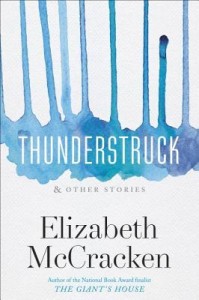 Speaking of sidewalks, I still remember walking up Bay Street toward the subway in August reading Thunderstruck and Other Stories by Elizabeth McCracken, a hardback no-less. I was hooked from the first delicious sentence: “Just west of Boston, just north of the turnpike, the ghost of Missy Goodby sleeps curled up against the cyclone fence at the dead end of Winter Terrace, dressed in a pair of ectoplasmic dungarees.” I loved this book, and its stories: “Many of them are about grief, about the peculiarity of details during the times in life in which we’re grief-struck, or stricken at all. They’re about human connection in surprising places, about misunderstandings in which the connection is missed. Their about the things that get lost and what we choose to preserve. They’re funny even with the sadness, a many sided shape. And they’re absolutely extraordinary.”
Speaking of sidewalks, I still remember walking up Bay Street toward the subway in August reading Thunderstruck and Other Stories by Elizabeth McCracken, a hardback no-less. I was hooked from the first delicious sentence: “Just west of Boston, just north of the turnpike, the ghost of Missy Goodby sleeps curled up against the cyclone fence at the dead end of Winter Terrace, dressed in a pair of ectoplasmic dungarees.” I loved this book, and its stories: “Many of them are about grief, about the peculiarity of details during the times in life in which we’re grief-struck, or stricken at all. They’re about human connection in surprising places, about misunderstandings in which the connection is missed. Their about the things that get lost and what we choose to preserve. They’re funny even with the sadness, a many sided shape. And they’re absolutely extraordinary.”
Purchase Thunderstruck from McNally Robinson
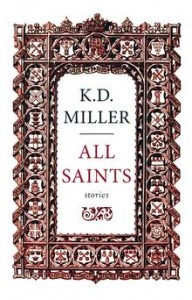 Last summer I reviewed All Saints by KD Miller in The Globe and Mail. “Most of [Miller’s characters] are searching for meaning; Miller – in language that doesn’t draw attention to itself, but bends to suit her purposes – uses the small moments in life to illuminate big questions. Where did the story start? What is destiny? Is there an order to the universe, to a life? But a life, we learn, is only a piece of the puzzle, meaning and wholeness only emerging when separate lives connect. Crucially and compellingly, such connections are mysterious – Miller shows how we are all figments of one and other’s imaginations.”
Last summer I reviewed All Saints by KD Miller in The Globe and Mail. “Most of [Miller’s characters] are searching for meaning; Miller – in language that doesn’t draw attention to itself, but bends to suit her purposes – uses the small moments in life to illuminate big questions. Where did the story start? What is destiny? Is there an order to the universe, to a life? But a life, we learn, is only a piece of the puzzle, meaning and wholeness only emerging when separate lives connect. Crucially and compellingly, such connections are mysterious – Miller shows how we are all figments of one and other’s imaginations.”
Purchase All Saints from McNally Robinson
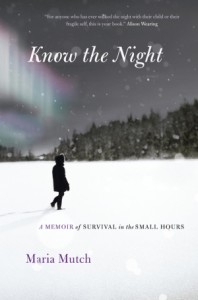 For a few weeks in February, I was deep into the memoir Know the Night by Maria Mutch, which I reviewed for The National Post, a book I read twice and puzzled through with so many notes, and figured out like a complicated math problem—so utterly engaging. All to the soundtrack of “Mercy Mercy Mercy” by Cannonball Adderley. “Know the Night, a memoir about a boy who doesn’t speak, is in love with language. Mutch’s prose is electric (when describing her relationship with her partner, she writes of “that ingredient vital for love, which can best be described, I think, as conspiracy” — my favourite line in the book) but the book is more concerned with words than the stories they tell. Mutch probes the connections between words and what they symbolize, as well as other connections for which words are a conduit.”
For a few weeks in February, I was deep into the memoir Know the Night by Maria Mutch, which I reviewed for The National Post, a book I read twice and puzzled through with so many notes, and figured out like a complicated math problem—so utterly engaging. All to the soundtrack of “Mercy Mercy Mercy” by Cannonball Adderley. “Know the Night, a memoir about a boy who doesn’t speak, is in love with language. Mutch’s prose is electric (when describing her relationship with her partner, she writes of “that ingredient vital for love, which can best be described, I think, as conspiracy” — my favourite line in the book) but the book is more concerned with words than the stories they tell. Mutch probes the connections between words and what they symbolize, as well as other connections for which words are a conduit.”
Purchase Know the Night from McNally Robinson
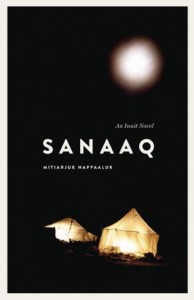 Another winter book I read around the same time was Sanaaq by Mitiarjuk Nappaaluk. Nappaaluk had been asked to write down some Inuktitut phrases for a missionary to learn, but didn’t stop at simple grammar exercises and went on invent a whole cast of characters and create the first Inuit novel. “The narrative skirts omniscience in a way that seems curious to the reader who is accustomed to the English novel. There is a matter-of-factness to the telling, perhaps related to its origins—it was written in a shorthand that can be written as quickly as it is spoken, and so this written novel has an oral nature. There is also a simplicity to its delivery that only comes across as such because a whole layer of the narrative is inaccessible to me as a reader (and I think that this is the challenge for this reader that Martin was writing about in her review). Saladin d’Anglure’s foreword makes clear that the apparent simplicity of Nappaaluk’s novel is undermined by the Inuit symbols and stories referenced, as well as details of Nappaaluk’s own life and members of her community. In short, this is only a straightforward story because I’m not smart enough to know it isn’t otherwise.”
Another winter book I read around the same time was Sanaaq by Mitiarjuk Nappaaluk. Nappaaluk had been asked to write down some Inuktitut phrases for a missionary to learn, but didn’t stop at simple grammar exercises and went on invent a whole cast of characters and create the first Inuit novel. “The narrative skirts omniscience in a way that seems curious to the reader who is accustomed to the English novel. There is a matter-of-factness to the telling, perhaps related to its origins—it was written in a shorthand that can be written as quickly as it is spoken, and so this written novel has an oral nature. There is also a simplicity to its delivery that only comes across as such because a whole layer of the narrative is inaccessible to me as a reader (and I think that this is the challenge for this reader that Martin was writing about in her review). Saladin d’Anglure’s foreword makes clear that the apparent simplicity of Nappaaluk’s novel is undermined by the Inuit symbols and stories referenced, as well as details of Nappaaluk’s own life and members of her community. In short, this is only a straightforward story because I’m not smart enough to know it isn’t otherwise.”
Purchase Sanaaq from McNally Robinson
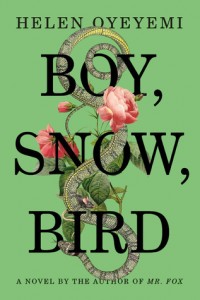 Helen Oyeyemi’s Boy Snow Bird was one of my vacation reads this summer, and I was enthralled by its twists and turns, and by how the British-born Oyeyemi channels American-ness in this novel. That it was based on a fairy tale might have had me supposing a certain shallowness to the narrative, but Oyeyemi drills down deep to show why an archetypal story like Snow White has such cultural resonance, and then introduces race as a theme to add a whole new layer of relevance. This novel was smart, sharp and gorgeous.
Helen Oyeyemi’s Boy Snow Bird was one of my vacation reads this summer, and I was enthralled by its twists and turns, and by how the British-born Oyeyemi channels American-ness in this novel. That it was based on a fairy tale might have had me supposing a certain shallowness to the narrative, but Oyeyemi drills down deep to show why an archetypal story like Snow White has such cultural resonance, and then introduces race as a theme to add a whole new layer of relevance. This novel was smart, sharp and gorgeous.
Purchase Boy, Snow, Bird from McNally Robinson
 I also adored Ruth Ozeki’s A Tale for the Time Being, which I read in April. Late to the party (because it had already been internationally celebrated by then) I read it for own pleasure, and realized it deserved all the hype. At heart, this is a novel about quantum physics, which shouldn’t scare you off. It’s a weird, wonderful story about the whole wide world, which is as terrible as it is beautiful, and it’s brilliant how Ozeki manages to knit it all together.
I also adored Ruth Ozeki’s A Tale for the Time Being, which I read in April. Late to the party (because it had already been internationally celebrated by then) I read it for own pleasure, and realized it deserved all the hype. At heart, this is a novel about quantum physics, which shouldn’t scare you off. It’s a weird, wonderful story about the whole wide world, which is as terrible as it is beautiful, and it’s brilliant how Ozeki manages to knit it all together.
Purchase A Tale for the Time Being from McNally Robinson
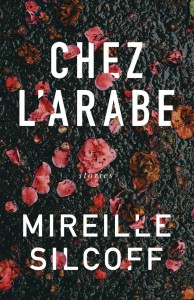 I haven’t talked much here about Chez L’Arabe by Mireille Silcoff, which I read this fall, but I loved it and my review is forthcoming in Canadian Notes & Queries. From my review: One can read Silcoff’s collection as a catalogue of beautiful well-made objects…Which is not to say that the stories lack depth, that they skim along their lush or shiny surfaces, but instead the things themselves are invested with meaning, each one “permeated with some little, important, imported world of its own.” “Materialist” is hurled as a slur more than once but, as a character replies (she of the sugar sifter), “I don’t see why anything should be considered less meaningful just because it’s concrete.””
I haven’t talked much here about Chez L’Arabe by Mireille Silcoff, which I read this fall, but I loved it and my review is forthcoming in Canadian Notes & Queries. From my review: One can read Silcoff’s collection as a catalogue of beautiful well-made objects…Which is not to say that the stories lack depth, that they skim along their lush or shiny surfaces, but instead the things themselves are invested with meaning, each one “permeated with some little, important, imported world of its own.” “Materialist” is hurled as a slur more than once but, as a character replies (she of the sugar sifter), “I don’t see why anything should be considered less meaningful just because it’s concrete.””
Purchase Chez L’Arabe from McNally Robinson
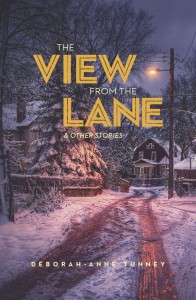 Deborah-Anne Tunney’s The View From the Lane was another recent read, but one I’ve not been able to shake off yet. It was a promising first book more than a perfect one, but a huge part of its promise is the atmosphere that Tunney creates. It reminded me of Atwood’s Cat’s Eye and Isabel Huggan’s The Elizabeth Stories in all the best ways. The night I finished this book, I stayed up late searching for the streets she writes about on Google Maps—I was left with such a sense of the place, and I wanted to see it for myself.
Deborah-Anne Tunney’s The View From the Lane was another recent read, but one I’ve not been able to shake off yet. It was a promising first book more than a perfect one, but a huge part of its promise is the atmosphere that Tunney creates. It reminded me of Atwood’s Cat’s Eye and Isabel Huggan’s The Elizabeth Stories in all the best ways. The night I finished this book, I stayed up late searching for the streets she writes about on Google Maps—I was left with such a sense of the place, and I wanted to see it for myself.
Purchase The View from the Lane by Deborah-Anne Tunney
 And finally, My Real Children by Jo Walton, a book I loved so very much and have given as a gift at least three times since I read it (and I replaced my ARC with a hardcover). Lots to say about this one—it connects interestingly with Lisa Bird-Wilson’s Just Pretending in its notion of real children (those we give birth to) as opposed to those who are miscarried or adopted and the “unrealness” that pervades these relationships through semantics. And with Ann-Marie MacDonald’s book, which also explores queer relationships and parallel lives. I reread this book for my book club and realized that while Walton’s strength is not as a prose stylist—there are a few lines in the book that are a bit painful to encounter—she has performed something remarkable in her creation of Patricia Cowan and her lives, so much so that this book reminded be of Hermione Lee’s Penelope Fitzgerald biography (Fitzgerald and Walton’s Patricia are near contemporaries). I’m going to be returning to this book again and again for the enthralling nature of its story, for its genre blurring and alternate histories, and for what Walton has to say about the shape and the details of an ordinary woman’s life.
And finally, My Real Children by Jo Walton, a book I loved so very much and have given as a gift at least three times since I read it (and I replaced my ARC with a hardcover). Lots to say about this one—it connects interestingly with Lisa Bird-Wilson’s Just Pretending in its notion of real children (those we give birth to) as opposed to those who are miscarried or adopted and the “unrealness” that pervades these relationships through semantics. And with Ann-Marie MacDonald’s book, which also explores queer relationships and parallel lives. I reread this book for my book club and realized that while Walton’s strength is not as a prose stylist—there are a few lines in the book that are a bit painful to encounter—she has performed something remarkable in her creation of Patricia Cowan and her lives, so much so that this book reminded be of Hermione Lee’s Penelope Fitzgerald biography (Fitzgerald and Walton’s Patricia are near contemporaries). I’m going to be returning to this book again and again for the enthralling nature of its story, for its genre blurring and alternate histories, and for what Walton has to say about the shape and the details of an ordinary woman’s life.
December 6, 2013
My Top 10 Books of 2013 has 22 books in it.
It’s been an amazing year for books. And this is the first time I’ve felt like this for a long time. This year, I’ve read books that broke my heart, books that changed my world, books that articulated everything I wonder about, books that changed my mind. This was a year of highs and lows, a year in which I needed certain books more than ever, and these in particular are the books that spoke to me so clearly. It was such an amazing year for books, in fact, that my Top 10 Books of 2013 has 22 books in it. The abundance is the very point, and I have no desire to narrow it down.
 Americanah by Chimamanda Ngozi Adichie:
Americanah by Chimamanda Ngozi Adichie:
I love a book so textured that the answer to my criticisms are contained inside its very pages. I reached page 335 to find a tirade by Ifemelu’s boyfriend’s sister who is about to publish her first book, a memoir about growing up black in America. She explains, “My editor reads the manuscript and says, “I understand that race is important but we have to make sure the book transcends race…” And I’m thinking, But why do I have to transcend race? You know, like race is a brew best served mild, tempered with other liquids, otherwise white folk can’t swallow it.” Explaining an anecdote, she says, “So I put it in the book and my editor wants to change it because he says it’s not subtle. Like life is always fucking subtle.”
 Life After Life by Kate Atkinson:
Life After Life by Kate Atkinson:
There is texture to a book like this, and the pleasure of seeing secondary characters from a wide variety of angles–Ursula’s mother in particular whose role in the novel’s conclusion was ingenious. Life After Life is a long book, as befitting a life lived over and over again, and I savoured its slowness, the returns to where I’d been before, places and people I was happy to revisit. I appreciated the specificity of its detail, the brilliance of its writing, its genre-blurring, its daringness in reframing the shape of a narrative, and yes, this is Kate Atkinson, so there is going to be that too.
Bush’s novels are always planted much more in concept than narrative and plot, and they are markedly unusual for this. They are also remarkable for their realism, details that plant the stories deep in the ground, on very specific sidewalks and streets, so that a book about a mother orbiting the Earth in Outer Space seems not so far from one’s own experience at all (as in her first novel Minus Time), and so too with this this novel about a journalist driven to explore a(n alleged) crime committed an ocean away amidst a community of street children turned circus acrobats. And this is just one way that this novel turns in on itself as we read it, for it is a story about how we project our own experiences upon those of others (and indeed, as Madeleine Thien read the novel through the lens of race, which never even occurred to me).
What I love best about this novel is that nobody ever changes. There is no great revelation. Claudia’s brother is still the jerk he was when the novel began, there is no fix for her father’s heartache, and even Claudia begins to see that her ex is moving away into a life of his own. But all the same, it’s okay, or it’s going to be. This is not aHow the Failed Housewife Learned to Get Along With the Vacuum kind of tale, but instead it’s about how Claudia learns to draw on her reserves, that herself exactly as she is has the capacity to roll with the punches better than anyone else. When life is messy, bumpy and hard, it’s because that’s what life is, and not because you’re doing it wrong
 The House on Sugarbush Road by Meira Cook:
The House on Sugarbush Road by Meira Cook:
There is no expressway into the Johannesburg of Méira Cook’s novel The House on Sugarbush Road. Instead, the roads are twisting and clogged with traffic, detritus, pedestrians on the roadside calling out in a language you don’t understand. This is a novel that is disorienting to encounter, hard to get one’s bearings in; the reader travels blindly along these foreign streets, trusting in the story and its teller. And as the story progresses, the trust builds. While The House on Sugarbush Road is Méira Cook’s first novel, she is widely published (and lauded) as a poet, she worked as a journalist in her native South Africa, and her prose gorgeously reflects the former while her novel’s approach shows the latter. The effect is brutal, surprising, and provokes an incredibly visceral reaction.
The key to this book, I think, and its usefulness for us, lies in a particular word that occurs at least twice. First, when she returns to her family’s London home and comes upon their back garden in early morning, the sight of a snail making its way across the patio table: “They would be so stirred by this.” Later, she writes about her husband who’d grown up on a council estate in East London, and his first trip to the Natural History Museum when he was six years old. At the sight of a life-sized model of a blue whale: “this was the most stirred he’d ever been.”
To be stirred then, to have our quiet disturbed. Perhaps this is why we should read this, or any book. A gentler version of Kafka’s frozen sea, and I like that. Not fortifying, but instead (and not merely) our reason for being.
 The Pure Gold Baby by Margaret Drabble:
The Pure Gold Baby by Margaret Drabble:
It’s such a strange novel: we are taken through the decades of a group of mothers in London and learn which marriages ended, which children succeeded, which others went wayward (and how there was no telling of who would be who). This is a novel about friendship, and how we tell each other stories, about how we become characters in the stories of one another’s lives. It’s about mental health, public health, institutions. It’s a novel full of facts, pages of passages that read like non-fiction. It’s about progress, and the illusion of progress.
Pure Gold Drabble, is what it is. And so naturally, I loved it.
Jennica Harper is the poet whose books I stay up reading late into the night. She has uncanny ability to zero in on my fascinations, articulate questions I’ve vaguely wondered about, to use the very things located in the world around me (songs, cultural lore, television characters, celebrity references) and spin their own mythology. In a recent conversation, she asked, “Is there such thing as a “gateway poet”? That’s what I’d like to be.” And she has certainly succeeded at this, most recently with her latest collection, the beautiful, quietly powerful Wood.
 Oh My Darling by Shaena Lambert:
Oh My Darling by Shaena Lambert:
And I love that, that here is a collection where I can tell you about the book, its themes, its shape, rather than just telling you the plots of three or four of the stories I liked best.Oh, My Darling doesn’t actually reference Clementine, which wikipedia has revealed to me is actually a satire (because who would write a song about a drowned girl whose feet were so big she had to wear boxes instead of shoes?) But its preoccupations are just as morbid, and so darkly humorously so at times that I am sure that Lambert knew about the satire. That tireless refrain, powered by blustery, lust-ery, souls laid bare. So much feeling for something seemingly shallow. Sound going nowhere. Just imagine how it would echo in a cavern, in a canyon, excavating for a mile…
 Cottonopolis by Rachel Lebowitz:
Cottonopolis by Rachel Lebowitz:
But most remarkably for this book that uses language to build a museum is that the language itself is easily and unabashedly the work’s most remarkable aspect. I love the stories here, the history, but I can’t help but catch my mind on a line like “The trill of the/ robin, the trickle of the rill.” Or my favourite poem in the collection, “Exhibit 33: Muslin Dress” which turns language inside out in order to sew the whole world up into a tidy purse: “Here are the railway lines and there are the shipping/ lines. Here’s the factory line. The line of children in the/ mines. The chimney lines. There is the line: from the/ cotton gin to the Indian.”
Rebecca Lee’s short stories share the same approach as Sarah Selecky’s, the same intimate first-person narration, close attention to detail that sets these characters as very much of this world (lines like “Lizbet basically knew how to live a happy life, and this was revealed in her trifle–she put in what she loved and left out what she didn’t”)–as well as dinner-party settings and fork on the cover. But on the other side, Lee’s marvelous telescoping endings and ultimate broadness of perspective remind me of the stories in Jhumpa Lahiri’s The Interpreter of Maladies. (I think “Bobcat” may join Lahiri’s “The Fifth and Final Continent” as one of my favourite short stories ever.) These stories were written over two decades and accordingly the collection lacks a certain cohesion, except for (and this is significant) the solidity of Lee’s voice.
 The Love Monster by Missy Marston:
The Love Monster by Missy Marston:
We come along with Margaret on her trip to rock-bottom, though the omniscient narrator also embraces Margaret’s mother, her co-workers, even the evil ex, the alien, and invests them with a powerful sympathy, an investigation of the kernel of sadness which lives within us all. The lines, the straight-talk, the music that Margaret plugs into her ears, the disasters–this Canadian book is hilarious, and will never, ever win the Leacock Prize (which is some kind of endorsement). It’s funny, and quirky, but not cute, and it’s terribly profound. Really amazing writing.
 The Woman Upstairs by Claire Messud:
The Woman Upstairs by Claire Messud:
Messud’s novel is also structured as a fun-house, trap-doors and booby-traps springing up if the reader makes the mistake of taking Nora at her word. Which is a difficult mistake to avoid–Nora’s voice is so forceful, persuasive, she perpetually speaks in generalizations and second-person address designed to make us feel comfortable, familiar. “Don’t all women feel the same?” she asks, and you’d be hard-pressed not to respond with a nod, but then, no! There is no such thing as “all women” anyway, and besides, Nora Eldridge is clearly unhinged. On top of being an unreliable trickster of a narrator, she is also blatantly wrong, about so many things, but most notably in her insistence on regarding the world within the limits of gendered binary terms. In this way, the novel recalls Carol Shields’ Unless, another book in which an enraged female narrator stamps her ladylike foot at the systematic repression of womankind, institutionalized sexism which completely exists, but her singular focus upon this obscures a far more complicated reality. Which is not to say that Nora Eldrige’s or Reta Winter’s rage is misplaced, that either should cease their foot-stamping, but just that there is ever and will be ever more to the story.
 Are You Ready to be Lucky? by Rosemary Nixon:
Are You Ready to be Lucky? by Rosemary Nixon:
So let’s break the silence then, shall we? Rosemary Nixon’s collection of linked short stories is one of the funniest, most original books I’ve read this year. I started reading it on Friday, found it hard to put down, and had devoured it by Sunday afternoon. Are you ready to be lucky, indeed.
 This is the Story of a Happy Marriage by Ann Patchett:
This is the Story of a Happy Marriage by Ann Patchett:
But Patchett does channel Didion in Fact Vs. Fiction when she writes, “We all turn our lives into stories. It is a defining characteristic of our species.” And this is the triumph of her book, how it turns the self-help trope inside out. Ann Patchett doesn’t have the answers, but what she has instead are stories and – like life itself – these can be more complicated and unfathomable than we’d ever believe of fiction.
 How the Light Gets In by Louise Penny:
How the Light Gets In by Louise Penny:
What is the attraction of Louise Penny’s novels, my reservations with her prose still being what they are? I think part of it is the intimacy she creates, between reader and place in her remarkably evoked village of Three Pines. And also the intimacy between the characters themselves, so much between them that doesn’t need to be explained, allowing the novels to progress in ways that are surprising. And finally, the intimacy of her narrative, her shifting points of view which enable us to understand her world from a wide range of perspectives. Which is not to say that her readers know everything. In fact, in this book in particular, the plot is operating on a whole other plane that readers are not even aware of until an incredible twist at the conclusion, and I promise that you never see it coming.
 The Children of Air India by Renee Sarojini Saklikar:
The Children of Air India by Renee Sarojini Saklikar:
This poetry collection is beautiful, devastating, difficult and important. Difficult in terms of subject matter, but yet the narrative was so compelling, N herself leading the reader through so many lives and stories, plot and intrigue. Throughout, I needed to take short pauses because it all was a little too much, but then I’d pick the book right up again, the poetry accessible and fascinating, rich with history and voices.
 Where’d You Go, Bernadette? by Maria Semple:
Where’d You Go, Bernadette? by Maria Semple:
Apparently Maria Semple’s novel Where’d You Go, Bernadette? was one of the biggest books of last year, but perhaps I wasn’t paying attention. Someone who was paying attention, however, was Stuart, who took note when I picked this book up in the store and casually remarked, “I’m kind of interested in this one,” and proceeded to buy me the book for Mother’s Day. I saved it for postpartum, because I had a feeling, and oh, what a good feeling it was. Two nights ago, Iris’s all night eating/fussy fits began, and I was so glad to have this book on hand. My mind is fuzzy and there is no way I could write a coherent review, but it’s an endorsement, I think, that on Saturday night when I was up from 12am until 5am feeding the baby, all I could really think of was, “Yes! I get to read more Bernadette!”
 The Faraway Nearby by Rebecca Solnit:
The Faraway Nearby by Rebecca Solnit:
And so it’s like this, a fantastic journey through a terrain with someone who sees deeper into the world than you’ve ever begun to imagined. Solnit is author of a book with the title A Field Guide to Getting Lost, and she makes digression into an art here, though it always winds back around eventually, the narrative accumulating. Winding, threading, Rapunzel and Penelope, spinning and spinsters. She makes connections between virtual threads and literal threads and fabric, and it all comes down to stories. It always does. “Moths drink the tears of sleeping birds.” What shape should a book be in a world where that is a fact?
For nearly two weeks, I was reading The Goldfinch, carting it everywhere I went, having to pull out a bigger purse in order to accommodate its heft at 771 pages, my hand cramping as I read it while breastfeeding. I ripped the dust jacket when I tried to tear off a sticker, and then took the dust jacket off altogether when it started getting tatty from the travel. After that, I put the book down on the table on something green, and then the cover started to disintegrate when I wiped the stain off with a damp cloth. I don’t usually treat my books so poorly, butThe Goldfinch is so large and solid, a piece of furniture nearly. It has presence, is lived with, is experienced. And it is interesting to think about my wear-and-tear on the book when I consider how much of the book is about what time does to physical objects. The Goldfinch is about its thingness just as much as it is about its text.
 Projection: Encounters With My Runaway Mother by Priscila Uppal:
Projection: Encounters With My Runaway Mother by Priscila Uppal:
It has become standard to refer to memoirists as “brave”, but I can’t help doing the same for Uppal, with the caveat that “brave” means something totally different here, something substantial. First, Uppal’s bravery in staring down this woman, her mother, who is clearly unhinged and exists in the alternate reality her love of movies provides. Uppal dares to confront her, but also dares to understand her, however unforgivingly. She is also brave to not forgive, or to have her story not adhere to standard narratives, to have a happy ending. She refuses to compromise, but also manages to see her story from all points of view. She is brave to take a story with so much pain and turn it into art that’s so extraordinary.
 The Interestings by Meg Wolitzer:
The Interestings by Meg Wolitzer:
The structure of The Interestings is fascinating, the novel weaving back and forth through time without great shifts, effortless for the reader to follow and seemingly effortless for the writer too, though I can’t imagine that this was really the case. And yes, it is so interesting, a book so terrific to be absorbed in and whose end (at page 468) arrives too soon.
December 16, 2012
Pickle Me This 2012 Books of the Year
As ever, it’s been a good year for books, and I’m only sorry that not everyone has yet been given the chance to fall in love with all the books that I loved best this year, but these are all books with good long shelf-lives and I know you will be happy to encounter any of these whenever you happen to do so. Just make sure you do.
 Here We Are Among the Living by Samantha Bernstein: I loved this memoir-in-emails, this wonderful Toronto book about coming of age in the shadow of 9/11 and the legacy of the Baby Boomers. From my review: It’s a book I emailed my friends about, my friends who were sitting around a booth with me at a College Street diner on the night of September 11 2001, and I told them, “This is our story.”
Here We Are Among the Living by Samantha Bernstein: I loved this memoir-in-emails, this wonderful Toronto book about coming of age in the shadow of 9/11 and the legacy of the Baby Boomers. From my review: It’s a book I emailed my friends about, my friends who were sitting around a booth with me at a College Street diner on the night of September 11 2001, and I told them, “This is our story.”
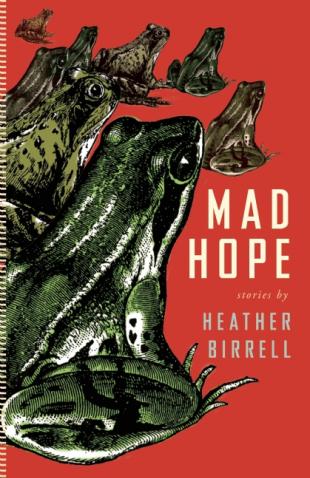 Mad Hope by Heather Birrell: Heather is my friend, but I have no compunction about including her book on my list with some objectivity because I really had no idea of the depths of her brilliance until until I read it. It’s a beautiful, rich, meticulously-curated short story collection, and it’s turning up on year-end best-of lists all over for good reason. Mad Hope is excellent.
Mad Hope by Heather Birrell: Heather is my friend, but I have no compunction about including her book on my list with some objectivity because I really had no idea of the depths of her brilliance until until I read it. It’s a beautiful, rich, meticulously-curated short story collection, and it’s turning up on year-end best-of lists all over for good reason. Mad Hope is excellent.
 The Book of Marvels by Lorna Crozier: This is the book I kept talking to strangers about on busses, reading them the line about forks: “It’s the only kitchen noun, turned adjective, attached to lightning.” From my review: …one of the few books I’ve ever encountered that dazzles you when its dust jacket falls off: the book is argyle. Its design is splendid, and the contents will not disappoint, guaranteed to appeal to anyone who loves words, and stories, and the thingy-ness of things.
The Book of Marvels by Lorna Crozier: This is the book I kept talking to strangers about on busses, reading them the line about forks: “It’s the only kitchen noun, turned adjective, attached to lightning.” From my review: …one of the few books I’ve ever encountered that dazzles you when its dust jacket falls off: the book is argyle. Its design is splendid, and the contents will not disappoint, guaranteed to appeal to anyone who loves words, and stories, and the thingy-ness of things.
 Arcadia by Lauren Groff: Groff is my favourite American writer, with so much more substance than hype about her, and in her second novel Arcadia, she just keeps getting better. From my review: Lauren Groff is a rule-breaker, a boundary-pusher, a genre-blurrer. There’s nobody else quite like like her writing right now, and she writes on the shoulders of those who came before her… She also writes with a deep appreciation and awe for history, for the role of story within history, and for the epic. Her first novel had a larger-than-lifeness about it, which is not so unusual for a book a writer has been working her life for, but it’s less usual for a second novel and for it to be pulled off so successfully too.
Arcadia by Lauren Groff: Groff is my favourite American writer, with so much more substance than hype about her, and in her second novel Arcadia, she just keeps getting better. From my review: Lauren Groff is a rule-breaker, a boundary-pusher, a genre-blurrer. There’s nobody else quite like like her writing right now, and she writes on the shoulders of those who came before her… She also writes with a deep appreciation and awe for history, for the role of story within history, and for the epic. Her first novel had a larger-than-lifeness about it, which is not so unusual for a book a writer has been working her life for, but it’s less usual for a second novel and for it to be pulled off so successfully too.
 The Forrests by Emily Perkins: One of a number of brilliant books this year that we haven’t heard nearly enough about. From my review: The Forrests is like The Stone Diaries, but edgier, and structured as the interior of its subject’s mind rather than her scrapbooks, and it’s enormously successful. Rachel Cusk, Virginia Woolf. Vividly human characters, gorgeous writing. It’s full of surprises, twists, turns and moments of illumination, quiet but profound in its brilliance, and devastating to have to finally put down.
The Forrests by Emily Perkins: One of a number of brilliant books this year that we haven’t heard nearly enough about. From my review: The Forrests is like The Stone Diaries, but edgier, and structured as the interior of its subject’s mind rather than her scrapbooks, and it’s enormously successful. Rachel Cusk, Virginia Woolf. Vividly human characters, gorgeous writing. It’s full of surprises, twists, turns and moments of illumination, quiet but profound in its brilliance, and devastating to have to finally put down.
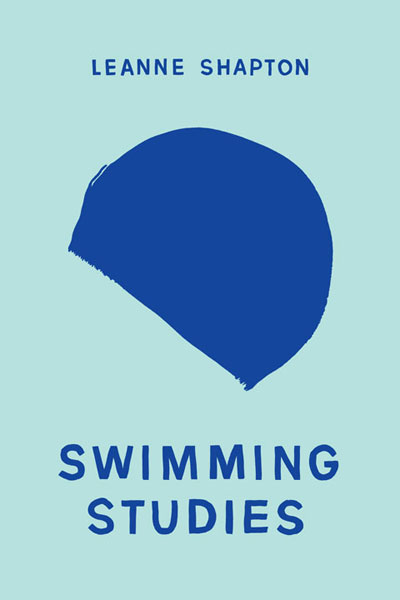 Swimming Studies by Leanne Shapton: Oh, sweet summer time and this gorgeous book I bought one sweltering day on a walk home from the swimming pool. From my review: Swimming Studies is a difficult book to explain, and I’m glad that I get to review it in my blog so that I don’t necessarily have to. That I can simply say that the whole thing just works, for no reason I can really fathom. Leanne Shapton writes about ponds and pools she has known– the Hampstead Heath Ladies Pond, the pool at the Chateau Laurier, the baths in Bath, and so many others. She writes about morning practice: “Ever present is the smell of chlorine, and the drifting of snow in the dark.” A many-page spread displays her extensive bathing suit collection. She includes drawings of her teenage swim teammates, with brief biographies for each: “I’m not crazy about Stacy since noticing that she copied onto her own shoes the piano keys I drew on the inside of my sneakers.”
Swimming Studies by Leanne Shapton: Oh, sweet summer time and this gorgeous book I bought one sweltering day on a walk home from the swimming pool. From my review: Swimming Studies is a difficult book to explain, and I’m glad that I get to review it in my blog so that I don’t necessarily have to. That I can simply say that the whole thing just works, for no reason I can really fathom. Leanne Shapton writes about ponds and pools she has known– the Hampstead Heath Ladies Pond, the pool at the Chateau Laurier, the baths in Bath, and so many others. She writes about morning practice: “Ever present is the smell of chlorine, and the drifting of snow in the dark.” A many-page spread displays her extensive bathing suit collection. She includes drawings of her teenage swim teammates, with brief biographies for each: “I’m not crazy about Stacy since noticing that she copied onto her own shoes the piano keys I drew on the inside of my sneakers.”
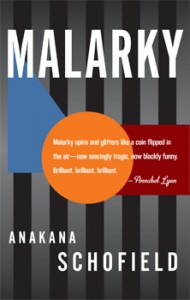 Malarky by Anakana Schofield: According to everybody that matters, this was one of the best books of the year, and when it comes out in the UK next year, the whole world is going to know it. From my review: If Hagar Shipley met Stella Gibbons, the end result might be Anakana Schofield’s Malarky, but then again, it probably wouldn’t be, because Malarky refuses to be what you think it is. And moreover, it probably wouldn’t be because the book is meant to be chock-a-block with allusions to James Joyce and Thomas Hardy. Don’t tell anybody, but I still haven’t read Ulysses (and hence the Gibbons instead of the primary sources), but I have read Malarky, and it was brilliant, which I know for certain even with the burden of my literary ignorance. And that I can pronounce a book as wonderful even whilst unable to access its higher planes of greatness is certainly saying something for the book itself, which is mostly, “You’ll like it too.”
Malarky by Anakana Schofield: According to everybody that matters, this was one of the best books of the year, and when it comes out in the UK next year, the whole world is going to know it. From my review: If Hagar Shipley met Stella Gibbons, the end result might be Anakana Schofield’s Malarky, but then again, it probably wouldn’t be, because Malarky refuses to be what you think it is. And moreover, it probably wouldn’t be because the book is meant to be chock-a-block with allusions to James Joyce and Thomas Hardy. Don’t tell anybody, but I still haven’t read Ulysses (and hence the Gibbons instead of the primary sources), but I have read Malarky, and it was brilliant, which I know for certain even with the burden of my literary ignorance. And that I can pronounce a book as wonderful even whilst unable to access its higher planes of greatness is certainly saying something for the book itself, which is mostly, “You’ll like it too.”
 The Blondes by Emily Schultz: I devoured this book in a weekend, and as soon as I was finished it, I started to read it again. From my review: Hazel’s few friendships and alliances with women are shattered as individuals try to navigate their respective ways to safety… But Hazel ultimately finds herself entirely powerless to her biological destiny and to patriarchal tyranny when the plague and its circumstances make impossible her choice to terminate her unwanted pregnancy. Schultz shows how change creeps in little by little so that to a feminist academic, lack of access to abortion can become almost remarkable. The Blondes is powerful and solid, gripping and scary.
The Blondes by Emily Schultz: I devoured this book in a weekend, and as soon as I was finished it, I started to read it again. From my review: Hazel’s few friendships and alliances with women are shattered as individuals try to navigate their respective ways to safety… But Hazel ultimately finds herself entirely powerless to her biological destiny and to patriarchal tyranny when the plague and its circumstances make impossible her choice to terminate her unwanted pregnancy. Schultz shows how change creeps in little by little so that to a feminist academic, lack of access to abortion can become almost remarkable. The Blondes is powerful and solid, gripping and scary.
 The Juliet Stories by Carrie Snyder: A wonderful book, and the world thought so too because The Juliet Stories was nominated for a Governor General’s Award this year. I called it “one of the best Canadian books you’re going to read this year,” and as the year draws to a close, I’m standing by that declaration.
The Juliet Stories by Carrie Snyder: A wonderful book, and the world thought so too because The Juliet Stories was nominated for a Governor General’s Award this year. I called it “one of the best Canadian books you’re going to read this year,” and as the year draws to a close, I’m standing by that declaration.
 Afflictions and Departures by Madeline Sonik: The best part of my life is that I got to spend this year coming up with excuses to put this fantastic book’s cover on the main page of 49thShelf. Winner of the City of Victoria Butler Book Prize and shortlisted for the 2012 Charles Taylor Prize for Non-Fiction. From my review: Sonik stitches her personal stories to the fabric of her time. Her narrative voice is blessed with startling omniscience, with the benefit of hindsight, and with an acute awareness of both how the extraordinary can be illuminated by ordinary detail, and also of how the ordinary and extraordinary are so often intricately connected. Sonik’s prose reveals her poet’s skill, as does these essays’ use of imagery and symbolism, but the broadness of her vision and the deftness with which she fits together surprising pieces of reality is evocative of Joan Didion’s masterful non-fiction.
Afflictions and Departures by Madeline Sonik: The best part of my life is that I got to spend this year coming up with excuses to put this fantastic book’s cover on the main page of 49thShelf. Winner of the City of Victoria Butler Book Prize and shortlisted for the 2012 Charles Taylor Prize for Non-Fiction. From my review: Sonik stitches her personal stories to the fabric of her time. Her narrative voice is blessed with startling omniscience, with the benefit of hindsight, and with an acute awareness of both how the extraordinary can be illuminated by ordinary detail, and also of how the ordinary and extraordinary are so often intricately connected. Sonik’s prose reveals her poet’s skill, as does these essays’ use of imagery and symbolism, but the broadness of her vision and the deftness with which she fits together surprising pieces of reality is evocative of Joan Didion’s masterful non-fiction.
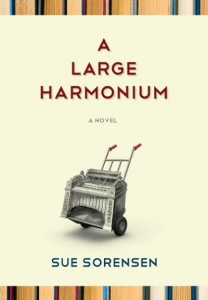 A Large Harmonium by Sue Sorensen: This book came out last year, but I only discovered it in June, and I’ve been recommending it steadily ever since to readers who have not been disappointed. From my review: Winnipeg resident Sorensen has much in common with Carol Shields, who was another, except that her tone is darker and more overtly hilarious. The novel’s pace is brisk and easy, which is not to say “light”, because there is depth here, but the story goes down just as well. Just as Shields did, Sorensen’s got a grasp on joy and how it factors amidst life’s absurdities. This is a wonderful novel with broad appeal. It’s absolutely the funniest and one of the best books I’ve read in ages.
A Large Harmonium by Sue Sorensen: This book came out last year, but I only discovered it in June, and I’ve been recommending it steadily ever since to readers who have not been disappointed. From my review: Winnipeg resident Sorensen has much in common with Carol Shields, who was another, except that her tone is darker and more overtly hilarious. The novel’s pace is brisk and easy, which is not to say “light”, because there is depth here, but the story goes down just as well. Just as Shields did, Sorensen’s got a grasp on joy and how it factors amidst life’s absurdities. This is a wonderful novel with broad appeal. It’s absolutely the funniest and one of the best books I’ve read in ages.
December 14, 2011
My Favourite Not-New Books of 2011
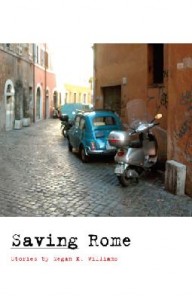 Saving Rome by Megan K. Williams: This short story collection had a mixed response when we read for my book club in October, but I devoured it, adored its depiction of expatriate life, thought Williams’ writing was fabulous, funny and surprising, and now whenever I hear Williams reporting on the CBC from Rome, there’s a whole new dimension to the broadcast.
Saving Rome by Megan K. Williams: This short story collection had a mixed response when we read for my book club in October, but I devoured it, adored its depiction of expatriate life, thought Williams’ writing was fabulous, funny and surprising, and now whenever I hear Williams reporting on the CBC from Rome, there’s a whole new dimension to the broadcast. 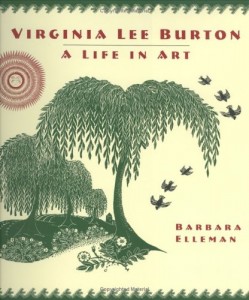
Virginia Lee Burton: A Life in Art: If you thought that Burton’s books were interesting, you don’t know the half of it. She was a fascinating woman, a textile designer, and her ideas about book design and children’s books are so subtly presented in her books that you’ve probably taken them for granted, but to have them illuminated makes the books so much richer. It’s a quick read, a beautiful book full of lovely images. Plus her sons have nothing but good things to say about her, which is unusual for a successful woman writer, no?
 White Stone: The Alice Poems by Stephanie Bolster: Bolster won the Governor General’s Award for this book which re-examines the mythical girl Alice from every angle. I love its metafictional elements, its bookishness, cross-textual references and that it was an absolute pleasure to read.
White Stone: The Alice Poems by Stephanie Bolster: Bolster won the Governor General’s Award for this book which re-examines the mythical girl Alice from every angle. I love its metafictional elements, its bookishness, cross-textual references and that it was an absolute pleasure to read.
The 27th Kingdom by Alice Thomas Ellis: Here was the surprise of the year, this paperback which had been  languishing on my shelf forever and ever turned out blow my mind with goodness. Think Muriel Spark and Graham Green ala Travels With My Aunt, hilarious (see the bit about eating babies) and an Anglophile’s dream (see the bit about the tea). You’ve got to read it. I love the bit about the horse meat. I read most of this during a brilliant 2 hrs at Huron Washington playground sprawled in the backseat of the play jeep while Harriet put sand in a bucket and dumped it out over and over again.
languishing on my shelf forever and ever turned out blow my mind with goodness. Think Muriel Spark and Graham Green ala Travels With My Aunt, hilarious (see the bit about eating babies) and an Anglophile’s dream (see the bit about the tea). You’ve got to read it. I love the bit about the horse meat. I read most of this during a brilliant 2 hrs at Huron Washington playground sprawled in the backseat of the play jeep while Harriet put sand in a bucket and dumped it out over and over again.
 All the Little Living Things by Wallace Stegner: I’ve never read Stegner before, and was afraid there might be too much rugged western manliness here, but here was a West I recognized from women authors (Sharon Butala in Lilac Moon and Joan Didion in Where I Was From) and I fell in love with the place. And with Stegner’s writing: the party scene is the best scripted party scene in the entire history of literary party scenes.
All the Little Living Things by Wallace Stegner: I’ve never read Stegner before, and was afraid there might be too much rugged western manliness here, but here was a West I recognized from women authors (Sharon Butala in Lilac Moon and Joan Didion in Where I Was From) and I fell in love with the place. And with Stegner’s writing: the party scene is the best scripted party scene in the entire history of literary party scenes.
Pathologies by Susan Olding: I hadn’t heard of Olding when we both placed second in the Edna Staebler Contest last 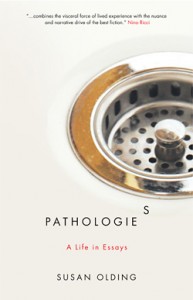 year, and so I didn’t understand what it meant that we were even acknowledged in the same stratosphere. And then suddenly her name started popping up in conversations everywhere, so I had to check out Pathologies, and it’s kind of the definitive book of amazing essays. She writes about troubled family relationships, infertility, her daughter’s adoption from China, and the challenges of motherhood with an admirable gutsiness, and amazing grace. She asks probing questions about and sets an inspiring example for how writers might be advised to consider the role of the self in non-fiction.
year, and so I didn’t understand what it meant that we were even acknowledged in the same stratosphere. And then suddenly her name started popping up in conversations everywhere, so I had to check out Pathologies, and it’s kind of the definitive book of amazing essays. She writes about troubled family relationships, infertility, her daughter’s adoption from China, and the challenges of motherhood with an admirable gutsiness, and amazing grace. She asks probing questions about and sets an inspiring example for how writers might be advised to consider the role of the self in non-fiction.
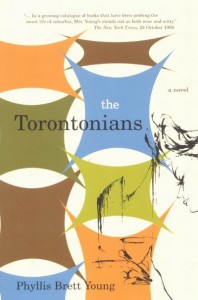 The Torontonians by Phyllis Brett Young: Imagine Betty Draper, but in suburban Toronto rather than Ossining NY, and armed with a buckwheat lawn instead of a shotgun. This novel anticipates Betty Friedan and Atwood’s The Edible Woman, but also invokes a Toronto of which much is now lost to us, and much has also stayed the same. This is the novel everybody wants to read once they’ve finished reading Imagining Toronto (and rightly so).
The Torontonians by Phyllis Brett Young: Imagine Betty Draper, but in suburban Toronto rather than Ossining NY, and armed with a buckwheat lawn instead of a shotgun. This novel anticipates Betty Friedan and Atwood’s The Edible Woman, but also invokes a Toronto of which much is now lost to us, and much has also stayed the same. This is the novel everybody wants to read once they’ve finished reading Imagining Toronto (and rightly so).
Elizabeth Bowen by Victoria Glendinning: Oh, the pleasure of a brilliant biography. And so few writers are really 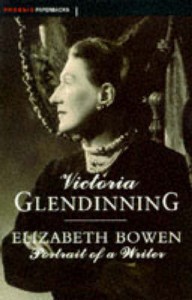 capable of it, but Glendinning is a master. Bowen herself wasn’t even the most important reason why this book was wonderful, but this book was the reason I came away with a whole new appreciation of her work.
capable of it, but Glendinning is a master. Bowen herself wasn’t even the most important reason why this book was wonderful, but this book was the reason I came away with a whole new appreciation of her work.
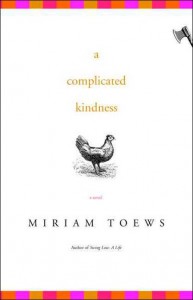 A Complicated Kindness by Miriam Toews: I was officially the very last person on earth to read this book, and had held its hype against it, but that’s ridiculous. The book is amazing. But you already knew that.
A Complicated Kindness by Miriam Toews: I was officially the very last person on earth to read this book, and had held its hype against it, but that’s ridiculous. The book is amazing. But you already knew that.
December 13, 2011
My Favourite New Books of 2011
It’s been a funny old year for me reading-wise. I read fewer new books in general, and I read a lot of new books that were kind of disappointing. I enjoyed much-hyped American books like This Beautiful Life and The Submission, but found them lacking as literature in ways their NYTimes reviews never referred to. A lot of new releases never appealed to me, and all subsequent success never managed to nudge my prejudices. I read very little little poetry, and focused too much on women writers. And more than anything else, I focused on my vast collection of unread novels acquired at various used book-sales over the years, and found such treasures there once I blew the dust off. Also remarkable is that I read so many great books this year that were written by friends of mine, such as Jessica Westhead’s And Also Sharks and Rebecca Rosenblum’s The Big Dream, and though both of these are among my 2011 literary highlights, I’m aware that I’m too close to be fully objective about them.
When I review any book upon my blog, it’s because I feel that the book is worth my time and yours, and a listing of those that have risen to the top can be found here. And what follows now is the top of the top of another rewarding reading year.
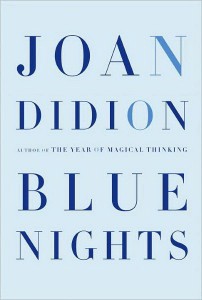 Blue Nights by Joan Didion: Like everything Joan Didion writes, this book is not easily summarized and has been misunderstood, even by people who’ve read it. Though apparently it had its origins in a less personal book about parenting, it became an examination of aging and mortality for one to whom it had never occurred that such ideas could be reality. To compare this book with “Good-Bye To All That” and “On Keeping A Notebook” only underlines its depth– amazing how much about loss someone so consumed with nostalgia never knew, but that’s what age does. Like everything Joan Didion writes, the meaning comes from her articulation of universal experience intersecting with her own particular world view. Part of the attraction is pure Joan Didion allure, yes, but most of the attraction is words unloaded with such remarkable precision.
Blue Nights by Joan Didion: Like everything Joan Didion writes, this book is not easily summarized and has been misunderstood, even by people who’ve read it. Though apparently it had its origins in a less personal book about parenting, it became an examination of aging and mortality for one to whom it had never occurred that such ideas could be reality. To compare this book with “Good-Bye To All That” and “On Keeping A Notebook” only underlines its depth– amazing how much about loss someone so consumed with nostalgia never knew, but that’s what age does. Like everything Joan Didion writes, the meaning comes from her articulation of universal experience intersecting with her own particular world view. Part of the attraction is pure Joan Didion allure, yes, but most of the attraction is words unloaded with such remarkable precision.
Outside the Box by Maria Meindl: This is the book I can’t stop talking about, and I’m pleased that I’ve 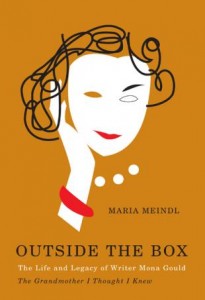 managed to win it at least a few readers. As noted in a conversation with a friend today, Meindl could write about anything and it would be interesting, but her subject is so interesting too. She chronicles the history of Canadian magazine and broadcast journalism, the history of Toronto literati (and the bohemian Gerrard Street Village in the ’50s), the status of women throughout the 20th century, the dazzling enticement of celebrity, and the story of her extraordinary grandmother whose eccentricities and foibles make her a fascinating character (though undoubtedly a frustrating family relation). But most of all, it’s a really great read, and Meindl proves herself a deft handler of narrative.
managed to win it at least a few readers. As noted in a conversation with a friend today, Meindl could write about anything and it would be interesting, but her subject is so interesting too. She chronicles the history of Canadian magazine and broadcast journalism, the history of Toronto literati (and the bohemian Gerrard Street Village in the ’50s), the status of women throughout the 20th century, the dazzling enticement of celebrity, and the story of her extraordinary grandmother whose eccentricities and foibles make her a fascinating character (though undoubtedly a frustrating family relation). But most of all, it’s a really great read, and Meindl proves herself a deft handler of narrative.
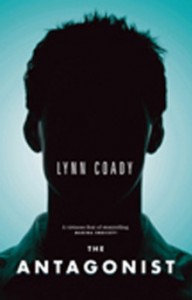 The Antagonist by Lynn Coady: What I’ve only yet confessed to my closest friends is that I’ve never wanted to have sexual relations with a fictional character the way I wanted to get with Rank, Coady’s outsized narrator. My more public declaration was that this was one of the few books ever that I would have read forever and ever, the story and the voice absolutely gripping. I loved the narrative ambiguity, the metafictional elements, the humour, the spot-on portrayal of small town life and also university life (because in many ways, this is as much a campus novel as was Mean Boy). Lynn Coady is amazing, and this book is her very best yet.
The Antagonist by Lynn Coady: What I’ve only yet confessed to my closest friends is that I’ve never wanted to have sexual relations with a fictional character the way I wanted to get with Rank, Coady’s outsized narrator. My more public declaration was that this was one of the few books ever that I would have read forever and ever, the story and the voice absolutely gripping. I loved the narrative ambiguity, the metafictional elements, the humour, the spot-on portrayal of small town life and also university life (because in many ways, this is as much a campus novel as was Mean Boy). Lynn Coady is amazing, and this book is her very best yet.
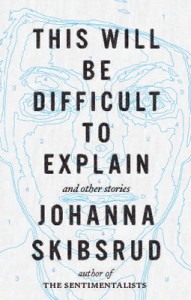 This Will Be Difficult to Explain and other stories by Johanna Skibsrud: Were this the very first book we’d ever read by Skibsrud, I think she’d be the critics’ darling, and we’d all be lamenting her underappreciatedness. But her Giller win last year cast her into the spotlight with The Sentimentalists, which means that all the people who dislike successful people don’t like her and neither do those with little patience for challenging writing (and that almost makes everybody). The Sentimentalists was a divisive book, and though I liked it, I thought it was more interesting than brilliant. Her story collection This Will be Difficult to Explain and Other Stories, however, is excellent and I’m sorry that more people haven’t had the chance to fall in love with it. When I read it a second time to prepare for my interview with Skibsrud, I discovered new depths I hadn’t even detected first time around– these stories are rife with buried treasure. My Mavis Gallant comparison didn’t come from nowhere– in the Year of the Short Story, this book stands out as one of the best.
This Will Be Difficult to Explain and other stories by Johanna Skibsrud: Were this the very first book we’d ever read by Skibsrud, I think she’d be the critics’ darling, and we’d all be lamenting her underappreciatedness. But her Giller win last year cast her into the spotlight with The Sentimentalists, which means that all the people who dislike successful people don’t like her and neither do those with little patience for challenging writing (and that almost makes everybody). The Sentimentalists was a divisive book, and though I liked it, I thought it was more interesting than brilliant. Her story collection This Will be Difficult to Explain and Other Stories, however, is excellent and I’m sorry that more people haven’t had the chance to fall in love with it. When I read it a second time to prepare for my interview with Skibsrud, I discovered new depths I hadn’t even detected first time around– these stories are rife with buried treasure. My Mavis Gallant comparison didn’t come from nowhere– in the Year of the Short Story, this book stands out as one of the best.
Never Knowing by Chevy Stevens: I am such a snob that I never get to fall in love with the books that  everybody else loves because I always think they’re terrible. Which means that I never get to wrapped up in fat paperbacks about serial killers, but with Stevens, I had the chance. I’ve heard from those who read her first book that the violence was a bit gratuitous, but I think she dialled it back a bit for this one. I loved that she managed to create suspense with a character who operated like a real person rather than one who committed stupid though plot-enabling conventions such as keeping secrets, and going down to the basement. In a truly remarkable cliche-defying feat, Steven proves that popular fiction is capable of being awesome.
everybody else loves because I always think they’re terrible. Which means that I never get to wrapped up in fat paperbacks about serial killers, but with Stevens, I had the chance. I’ve heard from those who read her first book that the violence was a bit gratuitous, but I think she dialled it back a bit for this one. I loved that she managed to create suspense with a character who operated like a real person rather than one who committed stupid though plot-enabling conventions such as keeping secrets, and going down to the basement. In a truly remarkable cliche-defying feat, Steven proves that popular fiction is capable of being awesome.
 I’m a Registered Nurse Not a Whore by Anne Perdue: Oh, the gasps, as I read this book on my summer vacation. My husband had to tell me to shut up because I was bothering him, but I couldn’t stop, because Perdue kept delivering one shock after another. The range of stories in the collection is really remarkable, the spectrum including a rooming house resident to one master of the suburban barbecue (and oh, that ending. Gasp. Holy John Cheever). Perdue is Jessica Westhead meets Alexander MacLeod, and I love this book.
I’m a Registered Nurse Not a Whore by Anne Perdue: Oh, the gasps, as I read this book on my summer vacation. My husband had to tell me to shut up because I was bothering him, but I couldn’t stop, because Perdue kept delivering one shock after another. The range of stories in the collection is really remarkable, the spectrum including a rooming house resident to one master of the suburban barbecue (and oh, that ending. Gasp. Holy John Cheever). Perdue is Jessica Westhead meets Alexander MacLeod, and I love this book.
The Forgotten Waltz by Anne Enright: I don’t know if I’ll ever understand why this book never made the 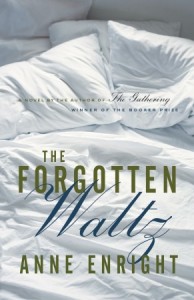 awards lists this year, and maybe it’s like Skibsrud and that you get lost in the shuffle when the follow-up to your divisive acclaimed work is even better than what came before. But there is no better novel for 2011 than this one (which I read in its entirety one day in June when I was sick in bed, and it’s the only book I’ve ever read while sick that I don’t feel sick when I think about). It’s about the economic crisis for goodness sakes, and real estate boom and bust, and so this is serious stuff, you know. But it’s also about a love affair, which is the most real thing in the entire world. Enright’s sentences are to die for, but she’s also created an unforgettable voice in Gina, and perfect document of the way we live now.
awards lists this year, and maybe it’s like Skibsrud and that you get lost in the shuffle when the follow-up to your divisive acclaimed work is even better than what came before. But there is no better novel for 2011 than this one (which I read in its entirety one day in June when I was sick in bed, and it’s the only book I’ve ever read while sick that I don’t feel sick when I think about). It’s about the economic crisis for goodness sakes, and real estate boom and bust, and so this is serious stuff, you know. But it’s also about a love affair, which is the most real thing in the entire world. Enright’s sentences are to die for, but she’s also created an unforgettable voice in Gina, and perfect document of the way we live now.
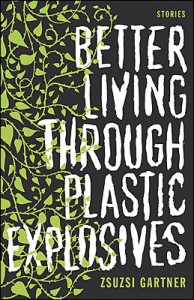 Better Living Through Plastic Explosives by Zsuzsi Gartner: Zsuszi Gartner’s success is what happens when great innovative writing is marketed to the mainstream, rather than relegated to a weird literary ghetto.I read its title story first in an issue of The New Quarterly, and I’d never encountered anything else like it. And there is justice in the world in that Gartner made it to the Giller shortlist, because this collection is everything you never imagined that CanLit could be– sharp-witted, biting, urban, satirical, scathing and shocking. It asks more of its reader than the average acclaimed book tends to, but the rewards are plenty. You’ll finish this book and look around you and think, “Truly, this is a place where something is going on.” (Runner up in this category is Carolyn Black’s collection The Odious Child.)
Better Living Through Plastic Explosives by Zsuzsi Gartner: Zsuszi Gartner’s success is what happens when great innovative writing is marketed to the mainstream, rather than relegated to a weird literary ghetto.I read its title story first in an issue of The New Quarterly, and I’d never encountered anything else like it. And there is justice in the world in that Gartner made it to the Giller shortlist, because this collection is everything you never imagined that CanLit could be– sharp-witted, biting, urban, satirical, scathing and shocking. It asks more of its reader than the average acclaimed book tends to, but the rewards are plenty. You’ll finish this book and look around you and think, “Truly, this is a place where something is going on.” (Runner up in this category is Carolyn Black’s collection The Odious Child.)
And Me Among Them by Kristen den Hartog: Odd, the second book on my list about an outsized  narrator, this time Ruth Brennan who is seven feet tall and whose perspective beholds remarkable things. From the intro to my interview with Kristen den Hartog: “When I fell in love with And Me Among Them last spring, it really felt like a spring, because it was the first novel I’d loved in ages after a long cold winter. The magical elements of the story about a girl who grows to be seven feet tall and is blessed with a strange omniscience were so perfectly countered with a realism that kept the story’s feet on the ground, and the entire effect delighted me, which is remarkable when one notes my aversion to books about freakish sorts (confession: I am of the handful of people who hated Geek Love).”
narrator, this time Ruth Brennan who is seven feet tall and whose perspective beholds remarkable things. From the intro to my interview with Kristen den Hartog: “When I fell in love with And Me Among Them last spring, it really felt like a spring, because it was the first novel I’d loved in ages after a long cold winter. The magical elements of the story about a girl who grows to be seven feet tall and is blessed with a strange omniscience were so perfectly countered with a realism that kept the story’s feet on the ground, and the entire effect delighted me, which is remarkable when one notes my aversion to books about freakish sorts (confession: I am of the handful of people who hated Geek Love).”
![]() Out of Grief, Singing by Charlene Diehl: On New Years Eve last year, the Globe and Mail published recommendations by Canadian literary types, and this was Alison Pick’s. Part of my attraction to this book is my insistence upon staring worst fears in the face, which is a faulty insurance, I know, but Diehl’s story about the loss of her baby not long after birth is also an affirming tribute to the power of story, and represents a remarkable broadening of the motherhood narrative.
Out of Grief, Singing by Charlene Diehl: On New Years Eve last year, the Globe and Mail published recommendations by Canadian literary types, and this was Alison Pick’s. Part of my attraction to this book is my insistence upon staring worst fears in the face, which is a faulty insurance, I know, but Diehl’s story about the loss of her baby not long after birth is also an affirming tribute to the power of story, and represents a remarkable broadening of the motherhood narrative.
Also: A Visit from the Goon Squad by Jennifer Egan and Burley Cross Postbox Theft by Nicola Barker: I read these books whilst on vacations, therefore leisurely, and never put coherent thoughts together about them except I LOVE THESE BOOKS. Further, this was a year with Margaret Drabble in it, with her remarkable collected stories A Day in the Life of the Smiling Woman. So naturally, it was a very good year.
Coming tomorrow: My Favourite Not -New Books of 2011
December 31, 2010
Great non-2010 books read in 2010
1) Old Books, Rare Friends by M. Stern and L. Rostenberg
2) How the Heather Looks by Joan Bodger
3) The Crack in the Teacup by Joan Bodger
4) Our Spoons Came From Woolworths by Barbara Comyns
5) People You’d Trust Your Life To by Bronwen Wallace
6) Ex Libris by Anne Fadiman (and also At Large and At Small, which I whiled away a sunny cottage day to)
7) The Sweet Dove Died by Barbara Pym
8) The Tiger in the Tiger Pit by Janette Turner Hospital
9) The Essential PK Page by PK Page
10) Touch the Dragon by Karen Connelly
December 14, 2010
My Favourite Books of 2010
 1) The Lacuna by Barbara Kingsolver: If ever an author belonged on the cover of Time this year, it was Barbara Kingsolver for her brilliant novel The Lacuna, which won the 2010 Orange Prize. Admittedly, it took 150 pages for me to get into this book, but it all made sense once I’d flown through the next 400 pages, and then I was devastated that the book was done and I had no more pages to read. This is a story of a boy growing up in Mexico, working in the household of Frida Keho and Diego Rivera, witnessing Trotsky’s murder, settling down in small town America, and becoming embroiled by McCarthyism. A snapshot of the twentieth century and a depiction of extraordinary lives, but also with much bearing on ordinary people and the way we live today. The Lacuna is the strongest work yet from this learned and imaginative writer who engages with the world in such a fascinating way. Read my review.
1) The Lacuna by Barbara Kingsolver: If ever an author belonged on the cover of Time this year, it was Barbara Kingsolver for her brilliant novel The Lacuna, which won the 2010 Orange Prize. Admittedly, it took 150 pages for me to get into this book, but it all made sense once I’d flown through the next 400 pages, and then I was devastated that the book was done and I had no more pages to read. This is a story of a boy growing up in Mexico, working in the household of Frida Keho and Diego Rivera, witnessing Trotsky’s murder, settling down in small town America, and becoming embroiled by McCarthyism. A snapshot of the twentieth century and a depiction of extraordinary lives, but also with much bearing on ordinary people and the way we live today. The Lacuna is the strongest work yet from this learned and imaginative writer who engages with the world in such a fascinating way. Read my review.
2) Lemon by Cordelia Strube. Here is the new feminist protagonist Canadian Literature has been waiting for– Strube’s Lemon is the only whole thing in a shattered world, and though that world threatens to take her down with it, she fights back with ferocity. The book is bleak and terrifying, brutal and sad, but Lemon carries it and we become so invested in the hope of of her eventual triumph. Her young voice is so authentic, and her perspective informed by the library of books she has devoured, her allusions and their interpretations a fellow bibliophile’s delight. Read my review.
3) Light Lifting by Alexander MacLeod. When I finished reading the story “Light Lifting”, which is right about in the middle of this 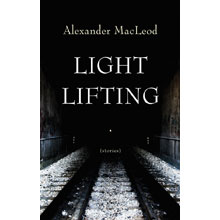 collection, I sent MacLeod (who I do not know) an emergency email to ask whether Robbie would be all right. He never replied, but I suppose he was busy, because that was the week he was longlisted for the Giller Prize, the shortlisting coming shortly after that, and though I really think he should have won, he sort of did, because this was the book he wrote after all. A giant, pulsing book, whose stories are all equally wonderful, though we all have our favourites. Mine include “Miracle Mile”, for its glimpse into the world of athletes, “Wonder About the Parents” for a rhapsodic reflection on a couple’s journey through marriage, parenthood and family life; or “Light Lifting” about brick laying, beer coolers in the workplace, class collisions, and brutal violence; or the one about learning to swim, or the one about the young boy delivering prescriptions, or or. Which is about all of them. You will love this book. Read my review.
collection, I sent MacLeod (who I do not know) an emergency email to ask whether Robbie would be all right. He never replied, but I suppose he was busy, because that was the week he was longlisted for the Giller Prize, the shortlisting coming shortly after that, and though I really think he should have won, he sort of did, because this was the book he wrote after all. A giant, pulsing book, whose stories are all equally wonderful, though we all have our favourites. Mine include “Miracle Mile”, for its glimpse into the world of athletes, “Wonder About the Parents” for a rhapsodic reflection on a couple’s journey through marriage, parenthood and family life; or “Light Lifting” about brick laying, beer coolers in the workplace, class collisions, and brutal violence; or the one about learning to swim, or the one about the young boy delivering prescriptions, or or. Which is about all of them. You will love this book. Read my review.
4) The Slap by Christos Tsiolkas. All right, I hated this book. It was ugly, misogynistic, and full of filth. But it was also unputdownable, fabulously plotted, and posed some interesting questions (even if they weren’t half as interesting than its author had supposed). Read this book if you’re looking for a well written soap opera, and you aren’t easily offended.
5) Black Water Rising by Attica Locke. This book was on the Orange Prize shortlist, where it did not quite belong (more John Grisham than John Updike, neither of whom belong on the Orange Prize shortlist either, but you know what I mean), but I believe it was there to prove that women’s writing is as various as writing is. Locke’s novel is well-plotted, her background in film obvious, the novel utterly enveloped by its period– it’s the hot, hot summer of 1981 in Houston, Texas, and a young Black lawyer awaiting the birth of his first child becomes embroiled in a dockworkers’ strike, the oil shortage, a mysterious woman saved from drowning, and a group of powerful people who will stop at nothing to get what they want. Read my review.
 6) The Little Stranger by Sarah Waters. “So what is it about these stories, about outsiders coming up the drive toward the stately home that’s past its prime?” I asked in my review of this book, and I suppose if you’re not partial to such things, you might not get it. But I loved this book, its unravelling mystery, which never unravelled enough to convince me that this was a story I was finished with. It was also so scary that at one point while reading it, I was too frightened to get out of the bathtub.
6) The Little Stranger by Sarah Waters. “So what is it about these stories, about outsiders coming up the drive toward the stately home that’s past its prime?” I asked in my review of this book, and I suppose if you’re not partial to such things, you might not get it. But I loved this book, its unravelling mystery, which never unravelled enough to convince me that this was a story I was finished with. It was also so scary that at one point while reading it, I was too frightened to get out of the bathtub.
7) A Short History of Women by Kate Walbert. This is the kind of novel it is heartening to realize that large presses are still publishing, challenging work that refuses lie down and be any one thing. Certainly a novel, but comprising stories that have been published elsewhere, this book tells the tale of four generations spanning 100 years, and the many ways in which feminism has changed everything and nothing, and how feminism itself evolves and doesn’t. And regardless of the uncertainity, there is life here. Read my review.
8) So Much For All That by Lionel Shriver: Far, far from a perfect novel, but certainly worth reading anyway because it’s entertaining, and also because Shriver insists on breaking the rules over and over again, and she pulls it off. Here is a novel “about the American health care system”, and only Shriver can make something that sounds so dry so enveloping. Read my review.
9) The House Beneath by Susan Telfer. This book arrived in my life in the dead of last winter, because somebody thought I might like it, and I was so pleased that they were right. In my review, I called this book “a Carol Shields novel compressed into 78 pages”, and it lived up to the promise of its beautiful cover. Through her poetry, Telfer tells the story of her parents’ marriage, and how the terrible past refuses to rest, particularly once she has children of her own. About how deep are our roots, even when we can’t (or don’t want to ) see them.
it, and I was so pleased that they were right. In my review, I called this book “a Carol Shields novel compressed into 78 pages”, and it lived up to the promise of its beautiful cover. Through her poetry, Telfer tells the story of her parents’ marriage, and how the terrible past refuses to rest, particularly once she has children of her own. About how deep are our roots, even when we can’t (or don’t want to ) see them.
10) Mammoth by Larissa Andrusyshyn. Once again, a collection whose narrative swept me up. The narrator is inspired by discovery of mammoth DNA to imagine similarly bringing her own father back to life, and so the book is about grief and loss, love and family, but also about a cartoon mammoth who begins attending school, and how we are related to our bodies, and what remains of us once we’re gone. A must for those of us who adore literature about science. Read my review.
11) Joy is So Exhausting by Susan Holbrook. I came to this book through the poem “Nursery” (a long, long poem as a mother perpetually breastfeeds her child): “Left: Now that you’ve started solids, applesauce in your eyebrows, I’ve become a course. Right: Spider on the plastic space mobile, walking the perimeter of the yellow crescent moon. Left: Dollop. Right: Now it’s on Saturn’s rights; if it fell off, it would drop right into my mouth. Left: I take 2%, you take hindmilk. Right: Fingers shrimp their way through the afghan holes. Left: I have hindmilk.” The entire poem is joyful (and exhausting), and the rest of the collection is filled with a marvelous sense of play. Read my review.
12) Track and Trace by Zachariah Wells: A truly beautiful package, but the poems are the true attraction. About the strange intersections between humans and their environment, and how it’s not even their environment after all. From my review: “Within each poem, the words fit together in surprising ways, with subtle rhyme, rhythm and alliteration. Within each word, the syllables, the vowels and consonants on and around my tongue. I read these poems aloud, lying on the carpet while my daughter threw blocks in the mornings, and the poems were a pleasure to put my mouth around, the starts and stops and open spaces.”
13) Vs by Kerry Ryan. I only finished reading this book last night (“Turn off the light!” “Just two more poems…”) so there is no review, but I loved this book about a bookish girl’s foray into competitive boxing. Ryan writes about learning to stand her ground, about learing to punch and be punched, about how her body changes, about how the people in her life relate to her new pursuit, about how it changes the dynamics in her marriage in most surprising ways, and about what it is to discover a part of ourselves we’ve never encountered before. Her poems are bare and unflinching, and the collection is gorgeous.
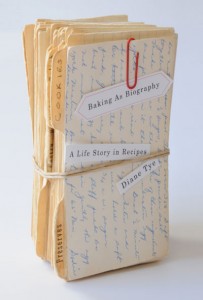 14) Baking as Biography by Diane Tye: The weekend I was reading it, no one wanted to talk to me because I was so frightfully boring, starting all sentences with, “Did you know…?” and “Would you believe…?” and finishing with a fascinating fact from Tye’s book. Of which they were many, as Tye goes through her late mother’s recipe box to reconstruct her life and her times. The book beginning with the most fascinating fact of all– that this woman who baked and cooked for her family for decades once remarked that she didn’t even like baking. It took a few more decades for Tye to understand how interesting this was, and the resulting book explores the history of homemaking, feminism, family and eating, and the complex ways in which we understand all of these things. I loved this book. My review is here.
14) Baking as Biography by Diane Tye: The weekend I was reading it, no one wanted to talk to me because I was so frightfully boring, starting all sentences with, “Did you know…?” and “Would you believe…?” and finishing with a fascinating fact from Tye’s book. Of which they were many, as Tye goes through her late mother’s recipe box to reconstruct her life and her times. The book beginning with the most fascinating fact of all– that this woman who baked and cooked for her family for decades once remarked that she didn’t even like baking. It took a few more decades for Tye to understand how interesting this was, and the resulting book explores the history of homemaking, feminism, family and eating, and the complex ways in which we understand all of these things. I loved this book. My review is here.
15) Imagining Toronto by Amy Lavender Harris. From the review I posted just last week: “Though its bibliography is 24 pages long, Imagining Toronto is no catalogue, or dry academic treatise, but instead it is a story, and the story is a city (and the city is a story, but we could go on like this forever). Harris has not merely written a book about Toronto, but she has written the city itself, from the depths of its ravines to the tip of the CN Tower, 1815 feet up in the sky. Her raw materials are the city’s fictions, and the city is rendered by these poems and stories in glorious concreteness.”
December 9, 2009
On reading in 2009
It’s been a funny old year for me, reading-wise and otherwise. I don’t even know how many books I read in total, because my Books Read Since 2006 list was lost in the (Un)Great Hard Drive Kaputment in late June. I’d wager I’ve read about 100 books in total though, and I’m quite pleased with the fact that I’ve read 53 of them since my baby was born in May. Many of these books have frustrated me, however. Something has changed in the way I read– either the books have gotten worse, or I’ve become more demanding/less patient. This has been ongoing since I first got pregnant, and all the books I read in the first trimester made me nauseous. Since then, I’ve had no time for a book that does poorly what it has set out to do.
I think there’s a connection in that lately, most of my literary fiction (apart from big name authors) comes from small presses. Last year, I made an “indie list”, that was sort of an off-the-beaten-track best ofs, but this year small press books make up half of the books I liked best. My impression is that the big publishing houses have been focusing less on literary fiction, in producing it and promoting it. And perhaps this been an opportunity for small presses to pick up their slack, or at least receive more focus on the wonderful books they’ve been publishing all along. It just seems remarkably clear to me for whom the bottom line is something other than profit.
I’ve also seen less incredibly polished popular fiction with a literary bent– it’s been derided, but last year I loved The Guernsey Literary and Potato Peel Pie Society, or The Flying Troutmans and American Wife which managed to be delicious and literary at the very same time. The pop/lit. divide has seemed wider lately, much to the detriment of popular fiction in general.
Anyway, where have I discovered the books I liked best this year? I was been coaxed to read many after newspaper reviews– Caroline Adderson on Lisa Moore, and Lisa Moore on Lorrie Moore in particular, neither of which disappointed. And then there are bloggers: I read The Spare Room after DoveGreyReader’s review, and I read The Incident Report because of Melanie’s review (which was before its Giller longlisting). I read The Children’s Book after Steph wrote about it at Crooked House. The Lydia Peelle book after Lauren Groff recommended it on her blog. I only read The English Stories because I wanted to buy something from Biblioasis at Eden Mills, and that goes to show you never know, because it was one of my favourite books all year. Apart from that, my point is that bloggers sell books, oh, yes they do!
Surprising: so many short story collections here. I root for the short story, but I adore novels, but maybe short stories have better suited my focus lately. Unsurprising: all my favourite books were written by women. This doesn’t mean the men are rubbish, but I think I’ve only read two novels by men in the last six months, so better broaden my focus in the new year.
This list doesn’t mention The Girls Who Saw Everything by Sean Dixon (which is called The Last Days of the Lacuna Cabal in foreign lands like America). Read my post on it: the book was absolute magic and blew me away, but alas, as it was not published this year, it doesn’t fit the bill. You should read it anyway, though.
My other favourite discovery was Barbara Pym. I can’t imagine what my life would have been had I not picked up Excellent Women at the Vic Book Sale and discovered how incredible her novels are. They’re so funny, smart and modern. I just finished read my second, No Fond Return of Love, and I liked it even better than Excellent Women. But I’ll be writing more about that later.
 The Mothers, by Brit Bennett
The Mothers, by Brit Bennett Busker, by Nisha Coleman
Busker, by Nisha Coleman Becoming Lin, by Tricia Dower
Becoming Lin, by Tricia Dower Birdie, by Tracey Lindberg
Birdie, by Tracey Lindberg Swing Time, by Zadie Smith
Swing Time, by Zadie Smith Shrill, by Lindy West
Shrill, by Lindy West Five Roses, by Alice Zorn
Five Roses, by Alice Zorn